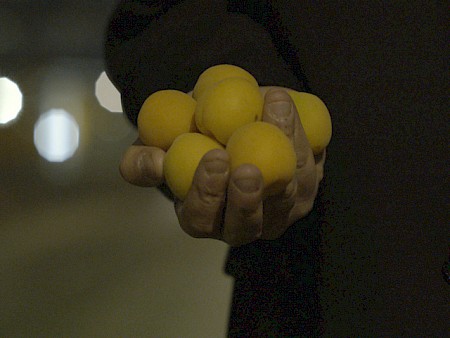Blood Sugar / project
Friday, September 1, 2017 - Sunday, October 22, 2017
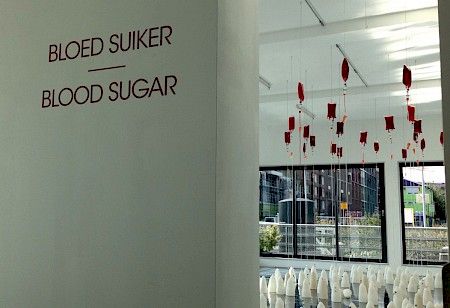
Blood Sugar by Patricia Kaersenhout
Blood Sugar
About Patricia Kaersenhout (1966)
Important themes in the body of work of visual artist and culture activist Patricia Kaersenhout are colonialism and slavery and its nasty consequences for many generations. On the one hand to speak out loud on behalf of so many people who dealt and still deal with its consequences and on the other hand because Caribbean tradition plays an important role. The history of ancestors has been transmitted via the body and so also Kaersenhout carries these embodied memories with her. For her giving way to these emotions in her work, is an outstanding way to give back the dignity to her ancestors that once has been taken away so merciless.
Patricia accepted Cargo’s invitation to develop a new work about that heavily ignored part of Dutch slavery history. During her research time and again she came across the Dutch production of sugar and its trade and respectively on sugar in relationship with slavery. It became clear to her that since the 16th century the Netherlands enriched themselves at the expense of so many enslaved lives.
A concise history of sugar and slavery
Since the Spanish blockade of the river Schelde in 1585, the gradually booming sugar trade moved from Belgium up to the north, where Amsterdam merchants invested with great enthusiasm in this profitable market. The Dutch proved out to be pioneers in the production and trade of sugar across the Atlantic Ocean. The West-Indian Company, founded in 1621, took over from the Portuguese the richest sugar plantations in Brazil. These served for many years as a model for other Caribbean plantations. When the native plant laborers died massively due to the miserable working and living conditions, the colonizers changed their tack. Because the demand for sugar seemed endless, they made slaves of people from Western Africa and shipped them via Europe to the Caribbean to have them worked on the sugar plantations.
The migration of labor and capital across the Atlantic Ocean is as interrelated with the production of sugar as the history of the Atlantic trade is interrelated with slavery. To put it less mildly: the sugar industry was one of the pillars of the new Atlantic economy.
Sugar and blood
DNA-tests on remnants of bones proved that the enslaved had to work so inhumanly hard, that their muscles came loose from their bones. With girls, their period stayed away and they did not grow older than 24 years. The sugar mills ground non-stop and the enslaved got barely 3 hours of rest a day. After the sugar cane had been cut down, it had to be put through the wringer manually. It often happened that their limbs were trapped in that wringer. Feared to lose too much time those limbs were cut off with an ax by one of the slave drivers. It does not need more comment that also blood and sugar are very much interrelated.
Sugar bakeries
The sugar was sold by so-called sugar cones, made in the sugar bakery, of which the first had been erected in Amsterdam in 1593 while in the middle of the 17th century already 66 were active.
In those days the Republic produced more than half of European sugar: it processed more than 35 million pounds of raw sugar. By its tropical origin sugar was not cheap at all and its luxurious character was emphasized by the import duties charged by most provinces. Nevertheless, by its booming production sugar became within reach for many more consumers. Sugar could be regarded as one of the first forms of mass consumption.
Amsterdam and sugar
Between 1741 and1744 many slave ships left from the Republic to Suriname. Besides from Walcheren, then also from the port of Amsterdam, which in those days was located next to the current Maritime museum. Many many years later - without scruples - the street names near Westerdoksdijk are named after these former slave ships. The river IJ, the ships used to navigate, interconnects the emotionally charged history of the Westerdok, de Houthaven, and Kattenburg. The Trans Atlantic Slave Trade database concluded with their investigations that on these ships a total of 14.606 Africans were captured, of whom 13.153 reached Suriname, where they were sold as slaves. At least 1.453 persons did not survive the crossing.
Blood Sugar
Kaersenhout offers Cargo’s visitors food for thought and exercises their imagination as she pictures slavery and its ongoing consequences in a most probing way. The series of bloodshot sugar cones in the project space stands for centuries of suffering. On one of the walls, we become aware of the names of those enslaved, who purchased freedom just in time before crossing the Atlantic Ocean.
Public Program
08.09 Film screening Sporen van Suiker (Traces of Sugar) (2017) by Ida Does
28.09 Artist' talk between Wendelien van Oldenborg, Charl Landvreugd, and Patricia Kaersenhout
15.10 Black Heritage Tour by boat along sites in Amsterdam like 'sugar bakeries' and merchant dwellings
Patricia Kaersenhout / artist
Deuce: gamelan concert by Sinta Wullur & Inez Liem May 27 2018 / program
Sunday, May 27, 2018 -

Het gamelan concert vond plaats tijdens de finissage van Deuce;
Sunday, February 26, 2017 -
As also the new Houthaven is a centre of urban expansion, Cargo has invited urban planner Zef Hemel beause of his recently published book De Toekomst van de Stad (The future of the city) (www.aup.nl).
However in his lecture he focussed on his fomer role as a mediater between the Amsterdam Port Authorities and the projectinvesters, a tough battle before the latter finally could start constructing new housing projects. The struggle was mostly about complaints about the noise.
Gerelateerd:Annaleen Louwes / artist
DUSK / project
Sunday, March 12, 2017 -
For more than 20 years De Gebouwengids organises excursions along architecture and urbanism. The strength of Wendelien Dijkman, founder of De Gebouwengids, is the approach of her tours, namely doing this with great passion for the city and urban developments. The city in transition with which redestination, transformation, sustainability and future developments are essential issues.
Gerelateerd:Annaleen Louwes / artist
DUSK / project
Saturday, November 25, 2017 -
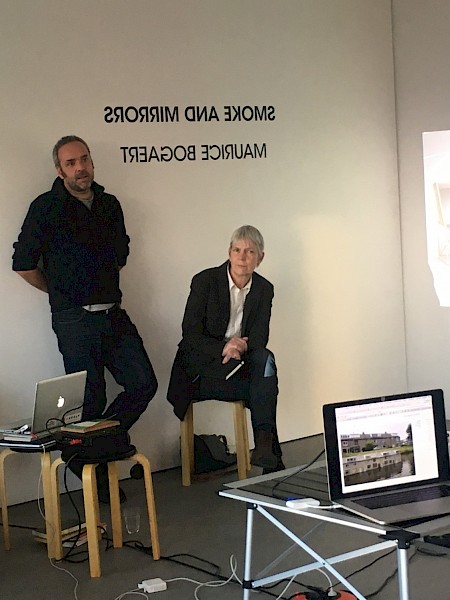

Within the frame of the Amsterdam Art Weekend, Cargo has organized an intensive public programme. The conversation between Bogaert and Zwakman was moderated by Lilet Breddels (ARCHIS). Despite the outcome of the work of both artists is completely different they both take architectural models as their point of departure.
Gerelateerd:Maurice Bogaert / artist
Smoke and Mirrors / project
Sunday, November 26, 2017 -

Pupils of Bride School Spaarndammerhout with Thierry Oussou, visiting the exhibition and attending the workshop with the artist.
Friday, April 21, 2017 -
Moderated by Jelle Bouwhuis Emmelie Koster, Pauline Burmann, Priscilla Macintosh and Thierry Oussou speak about the remnants of colonialism and how artists could contribute to the consciousness of historical and social issues.
Gerelateerd:Thierry Oussou / artist
Une histoire: le miel aux lèvres / project
Balta / project
Friday, March 29, 2019 - Saturday, April 20, 2019

Image of one of the French nuclear tests with mythological naming
Lost Paradise: from Utopia to Dystopia
Graphic designer and visual artist Balta shows a pilot in Cargo in which she explores the tenability of cultural identity. She got inspired by the mythical history of the island Tahiti, since 1880 as French Polynesia under French protectorate. She argues that this is a perfect example of how cultural identity can be manipulated by external influences. In 1768 the French thought to have discovered an earthly paradise. This so-called Tahitian myth, a western male Utopia, originated by the particular generosity from native Tahitians to visitors by offering them young virgins. Visual artist Paul Gauguin, amongst many others, made abundantly use of this myth.
Up until today, Tahiti has been redesigned as a sun-drenched paradise for mass tourism. Therefore the island has been consciously transformed into a tourist theme park. The darker side of this ‘heavenly spectrum’, resulted after France executed around 200 nuclear tests between 1966 and 1996, with devastating consequences for the entire region.
Balta’s recent book Misunderstandings functions as the point of departure for her presentation in Cargo. Based on the history and language of Tahiti, Balta depicts with various means the topical subject of cultural identity and transformation that takes place everywhere.
Gerelateerd:Balta / artist
Maurice Bogaert | Repoussoir / edition

© Maurice Bogaert
On the occasion of his project Smoke and Mirrors Maurice Bogaert made this print, called Repoussoir [2017], in an edition of 15 copies. Price: € 125 incl. frame excl. 6 % VAT.
2017
edition of 15
Digital print on paper
framed: € 125 (excl. 6% BTW)
Smoke and Mirrors / project
Friday, November 10, 2017 - Saturday, December 23, 2017
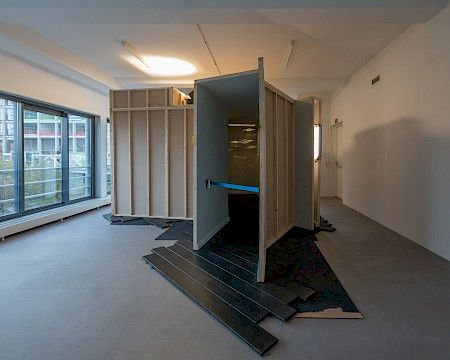
Installatie (fotografie:)
Smoke and Mirrors
With Smoke and Mirrors, Maurice Bogaert reflected on the sprawling city and the craziness on the housing market. The installation consisted of a so-called Pepper’s Ghost, a 19th-century analog invention which creates, by means of light and glass plates, the illusion of an apparition. This space-filling Pepper's Ghost in Cargo, aimed at a total experience and also served as a 'projector' in which reality and megalomanic future visions on the city tumbled over one and another. Together with the public program, Bogaert demonstrated the utopian, fantastic sci-fi thinking about the metropolis.
During the finissage, visual artist and art critic Basje Boer performed a column, written by her and inspired by Bogaert’s project. You can read it here in Dutch.
Public Program
25.11 Artist talk between Edwin Zwakman and Maurice Bogaert; moderator Lilet Breddels
26.11 Soundscape city (a sound walk through de Houthaven
17.12 Lecture by Monnik, Studio for Futures and Fiction
Maurice Bogaert / artist
Inside the work of Annaleen Louwes / program
Sunday, February 12, 2017 -
Marieke Zwart / edition

De Kletskop
2018
6
print van tekening
€ 80 inclusief BTW (niet ingelijst)
Benjamin Li / artist

Benjamin's handmade 'fortune money': 10000 BL
Different forms of identity, cultural heritage, integration and sense of home are important themes in the work of Benjamin Li. He finds inspiration in everyday life, social media and personal events. Li’s work functions as a mirror, making use of stereotypes and existing misunderstandings.
Gerelateerd:Je Verdient Het / project
Cargo has an ANBI Status / lesol

definitief afscheid van de Bonte Zwaan 17 oktober 2021
Financial aspects
Cargo in Context has an report ANBI Status
Annual Account and report 2016
Annual Account and report 2017
Annual Account and report 2018
Annua Account and report 2019
DEUCE / project
Friday, April 6, 2018 - Sunday, May 27, 2018

DEUCE by Naro Snackey
Click here to see the trailer of the project Naro Snackey has realized i.c.w. Paulien Oltheten
DEUCE
Because of her bi-cultural background, multimedia artist Naro Snackey is fascinated by the personal history of Indonesians of Dutch descent (Indo’s). In DEUCE, she explores the double identity of many so-called Indo’s as the result of a past of colonization and migration with which they have never really come to terms. She focuses on their personal stories and their systematic neglect in the canon of Dutch history.
In DEUCE, Snackey juxtaposes this individual experience and the dominating ‘national myth’. In her space-filling installation, she tries to reconcile the opposites and claims attention for these (mostly suppressed) stories.
Public Program
06.04 Festive Opening
15.04 Live Column by visual artist and art critic Basje Boer, inspired by Snackey's DEUCE. You can read the column here (in Dutch).
22.04 Artist Talk with visual artists Naro Snackey, Tiong Ang and curator Christine van den Bergh (Buro Bradwolff); Moderator: freelance curator, writer and art critic Bert Steevensz. You can read the talk here (in Dutch).
27.05 Festive Finissage, with Gamelan-duo Sinta Wullur and Inez Liem.
DEUCE was realized with the financial support of the Mondriaan Fund.
Naro Snackey / artist
Osmose / about
Jeroen van Westen – Osmose (23.03.2003-11.05.2003)
Ik kende Jeroen van Westen (1955) al langer en leerde van hem op een andere manier naar het landschap te kijken. Of nog beter gezegd, ik leerde van hem het landschap lezen. Als kunstenaar stelt hij zich als onderzoeker van landschappelijke veranderingen op. Vaak ontwikkelt hij zijn eigen concepten die hij in samen met of geluidskunstenaars of landschappers pur sang ten uitvoer brengt maar werkt ook vaak in opdracht, als een gemeente of andere overheid een herstructurering van een gebied voor ogen staat. Toen hij na een lang verblijf in Amerika terugkwam en mij uitgebreid vertelde over de projecten die hij daar in aanleg had ontwikkeld, vroeg ik hem voor een project in Cargo, dat uitmondde in Osmose.
Lees hier de column van Wiard Sterk terug.
Rearrangement of Priorities #2 / project
Friday, March 8, 2019 - Saturday, March 23, 2019

Image: Rearrangement of Priorities #2
Rainbow Soulclub
A Rainbow Soulclub cocktail with politics, art, poetry and coconuts.
The Rainbow Soulclub is a collective of individuals that operates from the Blaka Watra walk-in centre of the Regenboog Groep, an Amsterdam-based organization committed to helping homeless people and drug addicts. The Rainbow Soulclub was founded in 2005 by visual artists Saskia Janssen and George Korsmit and orchestrates weekly encounters and collaborations between artists, art students and Blaka Watra’s clients. Over the past 14 years these encounters have spawned a whole diversity of activities: painting, writing, publishing, drawing, pottery, recording music, making costumes, launching campaigns, staging exhibitions, and even travelling to Ghana and Suriname.
Under the title Rearrangement of Priorities #2, the Rainbow Soulclub serves its latest cocktail of politics, painting, poetry and coconuts for you in Cargo.
www.instagram.com/rainbowsoulclub
Gerelateerd:Rainbow Soulclub / artist
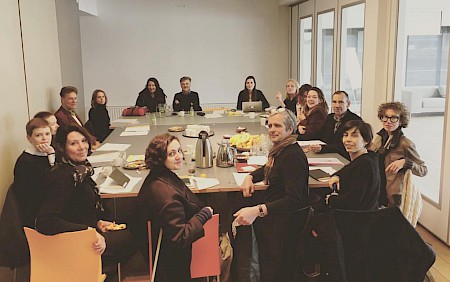
A day of reflection in Cargo about development of theories by and for teachers of Gerrit Rietveld Academie.
Sunday, April 9, 2017 -
Gerelateerd:
Thierry Oussou / artist
Une histoire: le miel aux lèvres / project
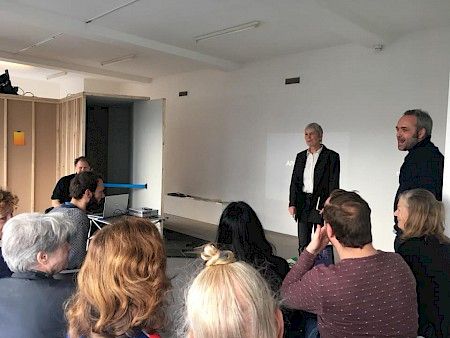
The Kaddu Waswa Archive - Andrea Stultiëns / project
Friday, May 4, 2012 - Friday, August 31, 2012
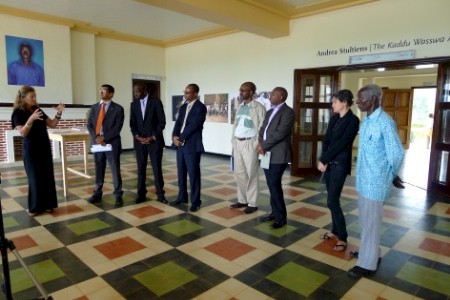
Preview The Kaddu Wasswa Archive
As a curator I knew Andrea Stultien's (Roermond, 1977)works already although her exhibition The Kaddu Wasswa Archive I saw in the Nederlands Foto Museum in Rotterdam in 2010 cae as a most pleasant surprise especially a I was in the process of going to the East African region my self.
The Kaddu Wasswa Archive is the visual biography of Ugandan Kaddu Wasswa, born in 1933. He played an important rol in his community as a teacher and a social worker. What is exceptional about h in those days 78-years old Wasswa is that he has always documented his activities. He wrote novels, plays and essays, took photographs and collected photo's. Additionally his extensive archive contains letters and newspaper clippings, often with added commentary.
Stultiëns met Kaddu Wasswa in 2008 through hos grandson and photographer Arthur C. Kisitu. Togehetr with him Andrea set out to explore Wasswa's archive. She took photographs of the documents to which she added her and Kisutu's own photo's which were taken during their meetings. The result is a unique biography in which the author is personally visible as well.
Kaddu Wasswa started his archive in the period when Uganda was seeking independence from its coloniser Great Britain. The many photo's in the archive present a fascinating view of the country Uganda and its inhabitants during the first 50 years of independence, which has been commemorated in 2012. Next to an impressive exhibition an exceptional publication preserves the history of a man and tells the story of a country. The Kaddu Wasswa Archive, a visual biography by Andrea Stultiëns, Kaddu Wasswa John and Arthur C. Kisitu. Publisher: Post Editions Rotterdam 2020.
See www.andreastultiens.nl for more info about the artist and her work.
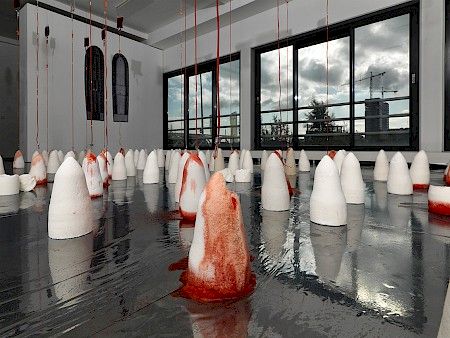
Installation view of Blood Sugar by Patricia Kaersenhout © Aatjan Renders
Rainbow Soulclub / artist
The Rainbow Soulclub, an initiative of visual artists Saskia Janssen and George Korsmit, was established in September 2005. Every week members get together in Blaka Watra, a shelter for homeless and users of drug addicts ran by De Regboog Groep in Amsterdam. These get togehers involve weekly meetings and collaborative projects between the homeless and art students. The starting point for these meetings is a mutual curiosity about each other’s lives. The aim is to share ideas for cooperation on every level. This is not limited to ‘art production’. If possible these ideas are actually implemented together. The ambition is that both groups can gain just as much from these encounters. Even when this involves actual ‘art production’, the ‘artistic decisions’ are reached jointly instead of being decided by the artists.
Gerelateerd:Rearrangement of Priorities #2 / project
On-Trade-Off: Film program, curated by Rosa Spaliviero / program
Sunday, December 8, 2019 -
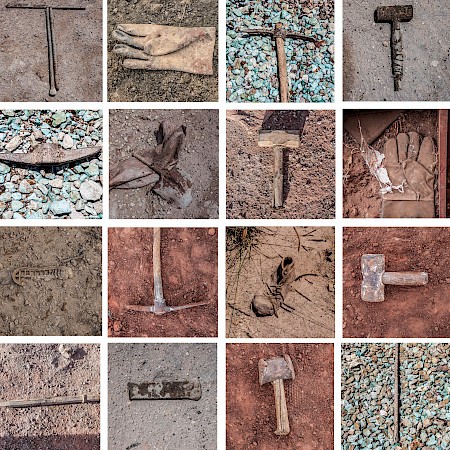
Outils - Georges Senga
Sunday December 8 in collaboration with Cargo Flemish House for Culture de Brakke Grond in Amsterdam organised a program.
In between the 2 films by visual artist Sammy Baloji (DRC) Pungulume (32 min.) and by film director Bodil Furu (NO) Les Mangeurs de Cuivre (82 min. ) curator Rosa Spaliviero (Picha, Lubumbashi DRC/Brussels )had a conversation with Belgian anthropologist Filip De Boeck (University Leuven) about the thorny issues in both films.
What are the consequences of mining in the Congolese Province of Katanga for human beings, the environment and the economy? Both Baloji and Furu unveil in their films the role of mineral resources in the long history of civil wars and conflicts in the Democratic Republic of Congo.
Gerelateerd:On-Trade-Off; The Weight of Wonders / project

Panelists and members of the public continue the discussion about political agency and the role of art and artists in raising awareness, over a hard-earned glass of wine.
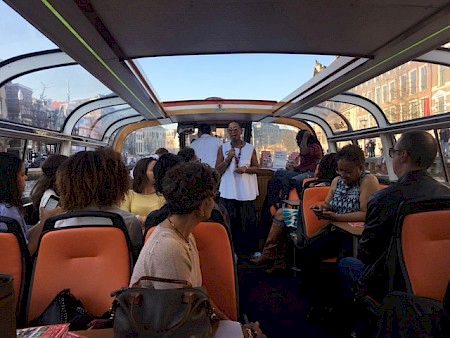
Public program Patricia Kaersenhout - Boat trip by Black Heritage Tours
Van Hout en de dingen die voorbijgaan: encounter between old and new citizens and workers in de Houthaven September 15 2019 / program
Sunday, September 15, 2019 -
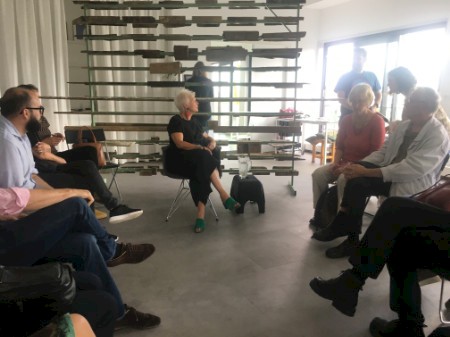
moderator en bewoner van het eerste uur Christ'l Dullaert te midden van bewoners
Gerelateerd:A Concise History of the Amsterdam Lumber Docks / project
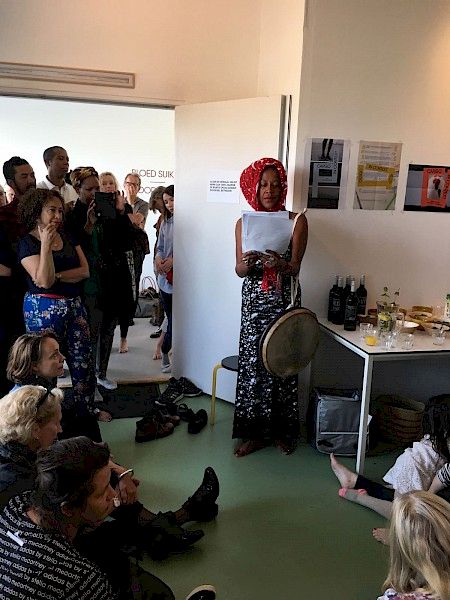
Introduction by Neske Beks at the opening of Blood Sugar

Linkboven: Lilian Nabulime. Rechtsboven: Médard Bizimana. Linksonder: Peterson Kamwathi.
Voorwaarts, maar , / artist
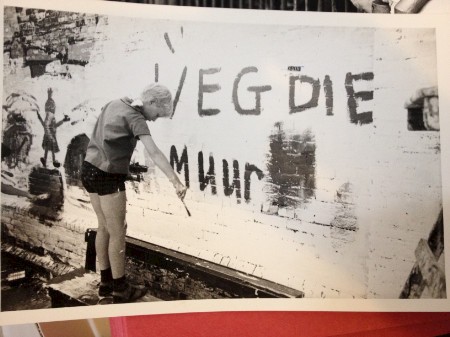
Campagnebeeld: Protest in Spaarndammerbuurt
ABOUT AIMEE ZITO LEMA
Visual artist Aimée Zito Lema (Amsterdam, 1982) engages in her practice with questions around social memory and the body as an agent of resistance. Zito Lema studied at the University of the Arts (UNA), Buenos Aires, the Gerrit Rietveld Academy, Amsterdam and holds a Master degree in Artistic Research from the Royal Academy of Art, The Hague. Recent solo exhibitions include: 13 Shots, Calouste Gulbenkian Museum, Lisbon (2018), Imprinted Mater, Looeirsgracht 60, Amsterdam (2017) A Series of Gestures, Kunsthall Trondheim (2017). Group exhibitions include: 2 Unlimited, De Apple, Amsterdam (2018), Idiorritmias and Muestreo #1, MACBA, Barcelona (2017), the 11th Gwangju Biennial (2016), Dorothea von Stetten Art Award, Kunst Museum Bonn (2016), Horse Pistes, L’art de la Revolte at the Centre Pompidou, Paris and the the Centre Pompidou Malaga (2016), and New Habits, at Casco, Utrecht (2014).
She was artist in residence at the Rijksacademie voor Beeldende Kunsten in Amsterdam (2015-16), a long-term collaborator with Casco Art Institute, Utrecht (2013-18) as well as artist in residency at Het Vijfde Seizoen, Den Dolder (2011), Castrum Peregrini, Amsterdam (2017), and Rua das Gaivotas 6, Lisbon, in the context of the European cooperation project 4Cs – From Conflict to Conviviality through Creativity and Culture.
Since April 15 you can experience her solo Here is where we meet in the Oude Kerk in Amsterdam.
Zito Lema's work has been supported in the last years with grants and scholarships from the Mondrian Found, City of Amsterdam (district West), the Amsterdams Fonds voor de Kunst and the Prins Bernhard Cultuurfonds.
“(…) Het zijn deze poëtische momenten waarin de kracht van Aimée Zito Lema’s werk schuilt. Ze lijkt steeds te zoeken naar een metaniveau: de geschiedenissen als uitgangspunt voor het ontleden van bepaalde tijdloze mechanismen. Dit doet echter niets af aan hun originele impact: ze weet de bestaande verhalen van een nieuwe laag te voorzien. Opgegroeid in een zeer politieke context heeft ze een eigen vorm moeten vinden voor iets wat altijd als vanzelfsprekend in haar leven aanwezig was. Tegelijkertijd heeft ze de Argentijnse dictatuur of Amsterdamse krakersrellen zelf niet bewust meegemaakt, wat het onmogelijk maakt deze situaties volledig te begrijpen. Om toch een ingang te vinden, zijn afstand en transformatie misschien wel noodzakelijk. In haar doorlopende onderzoek naar geheugen en nalatenschap blijkt Zito Lema in staat om geschiedenis opnieuw tot leven te wekken en in leven te houden.”
Fragment uit Metropolis M - Features - Aimée Zito Lema - 'Aangeraakt door de Tijd' - door Yasmijn Jarram - October 2017
Gerelateerd:Weg die muur! (working title) / project
DUSK by Annaleen Louwes / project
Wednesday, February 1, 2017 - Sunday, March 19, 2017

DUSK © Annaleen Louwes 2017
Those who are already familiar with the work of Annaleen Louwes will associate her with probing portraits of vulnerable people: psychiatric patients, prisoners or just people she has come across. Louwes’ patient eye highlights their extreme vulnerability with their inner beauty. Without any personal judgement she therefore invests them with self-esteem and emphasises the human condition implicitly in her work.
Without forsaking her customary patience and preciseness, Louwes showed in Cargo a surprising cinematic triptych, that can be seen as an exciting new direction for her body of work. To be better versed in the phenomenon of cinematography, Louwes asked a professional cinematographer Josje van Erkel to work with her on DUSK and so experienced the difference of working with moving images as opposed to still ones.
Louwes saw the ephemeral character of De Houthaven as a metaphor for DUSK. The newly reclaimed land looks like a desert with its horizon split by a multiplicity of cranes. The first building had been finished and the new occupants moved into their brandnew condominiums. The port also was a hive of activity: ships loaded and unloaded their goods and then silently sailed off the next day to a new destination.
Louwes observed and registered all these movements, but also revealed a hidden world invisible to the ordinary spectator. She used De Houthaven as the stage for composing her atmospheric triptych, that leads to a sequence of images in which for the first time she experiments with the elapsing of time.
Public programme around Dusk:
1. Merel Bem – On Doorkijken/ A Closer Look at Photography
2. Zef Hemel – Plea for Amsterdam as a metropolis
3. De Gebouwengids – A walking tour through De Houthaven
Film Crew: Director: Annaleen Louwes; Cinematography: Josje van Erkel; NSC Sound: Arthur Wagenaar
Gerelateerd:Annaleen Louwes / artist
FERNWEH / project
Rearrangement of Priorities #7 / project
Thursday, February 27, 2020 - Saturday, March 21, 2020
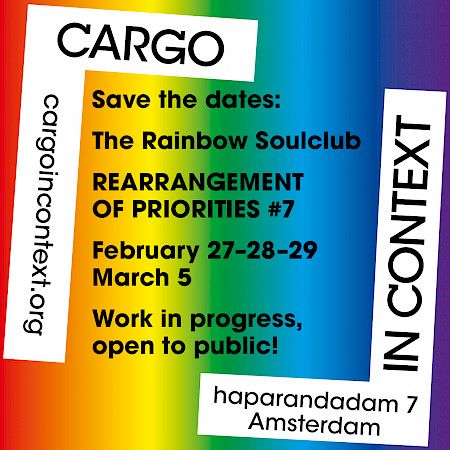
Banner for Rearrangement of Priorities#7
Rearrangement of Priorities #7
Na een succesvolle samenwerking vorig jaar met Rearrangement of Priorities #2, toont de Rainbow Soulclub dit jaar haar meest recente werk Rearrangement of Priorities #7 in Cargo. Het lijkt een even spirituele missie als levendig eerbetoon te worden aan haar leden die er helaas niet meer zijn.
Het proces van hoe deze tentoonstelling geleidelijk vorm krijgt, is voor het publiek te volgen op 27, 28, 29 februari en op 5 maart tijdens de reguliere openingstijden van Cargo. Tijdens de feestelijke vernissage op vrijdag 6 maart wordt om circa 18.00 uur een live column uitgesproken door dichter en jurist Babeth Fonchie.
Publiek Programma
27-29.02 en 05.03 Work in Progress - open voor publiek!
06.03 Feestelijke opening, met een live column van dichter en jurist Babeth Fonchie
13.03 Meet & Greet the Club
21.03 Feestelijke finissage
http://www.rainbowsoulclub.com
Gerelateerd:Rainbow Soulclub / artist
A research project after CO2 off set / project
Tuesday, September 1, 2020 - Friday, September 30, 2022

The project “Levens Compensatie Lottery” is about the organization of a lottery, with a first prize the CO2-compensation of the entire life of the winner. The expected CO2-off set will be calculated as precisely as possible and will be compensated by means of planting a wood or by the rectification of peat bogs. The aim of the Lottery is to visualise the entire CO2-off set of a human life in a rousing way. Besides Van Staaveren wants to discuss the underlying complexity of dept compensation. The lottery tickets are for free!
Gerelateerd:Suzie van Staaveren / artist
Une histoire: le miel aux lèvres / project
Saturday, April 1, 2017 - Sunday, May 21, 2017
Une Histoire: Le Miel Aux Lèvres
Thierry Oussou developed a language laboratory for Cargo, in which he focuses on the authenticity and impact of colonization on a native language and identity. In his lab, Oussou presents evidence for his assumption that the original, authentic meaning of many words and expressions have got lost by alienation. He used the current transformation of the Houthaven (Lumber port) as a metaphor for this assumption.
Interviews with different people who witnessed this transformation, constitute the foundation for his research. These interviews are included in 4 languages (Fon, French, Dutch and English) in a space-filling artist’s book, that reads like Une histoire: le miel aux lèvres.
Public Program
09.04 Bart Luirink (ZAM) in conversation with Thierry Oussou.
21.04 Round table discussion with Pauline Burmann (Thami Mnyele Fdt.), Emmelie Koster (No Man's Land Gallery) and Priscilla Macintosh (Studio Macintosh); Moderator: Arno van Roosmalen (STROOM Den Haag).
21.05 Screening: Mi a no mi Ik ben niet ik Trefossa (Ida Does, 2015) + introduction; and subsequently a Finissage.
4, 5, 11 and 13 April: Thierry Oussou will supervise workshops with pupils of the Brede School Spaarndammerhout.
Thierry Oussou / artist
Une Histoire, le miel aux lèvres - rond]]e tafel gesprek / program
Une histoire, le miel aux lèvres - Bart Luirink (ZAM) in conversation with Thierry Oussou / program
Une Histoire, le miel aux lèvres - Mi a no mi Ik ben niet i Trefossa (2015) - Ida Does film screening / program
On Property / project
Thursday, June 4, 2020 - Saturday, July 25, 2020

Ghislaine Leung, VIOLETS 2, 2018. Installation view, Netwerk, Aalst, Belgium Courtesy of the artist and ESSEX STREET, New York.
On Property
A program by Remco Torenbosch, developed for Cargo.
INTERNATIONAL INSTITUTE OF SOCIAL HISTORY
GHISLAINE LEUNG
REMCO TORENBOSCH
On Property is set against the backdrop of one of the most speculative construction sites in Amsterdam: de Houthavens. This former port area (also the location where Cargo is located) is exemplary of how urban expansion is used as a means for speculation of property, with all its socio-economic consequences. On Property focuses on the subcutaneous and invisible lines of the idea of ownership, a concept that forces separations from public and private and that produces an unequal distribution of collective values. On Property investigates the complex influence that ownership has on culture, political economy, production, distribution, and discusses possible alternatives.
Public Program
> live column by Lilet Breddels (ARCHIS)
> Film screening PUSH (Fredrik Gertten 2019, English subtitles), with an introduction by Indira van 't Klooster (ARCAM); Thursday July 9 7.30 pm
> Panel discussion On Property (in English), English spoken July 16 7.30 pm
With special thanks to International Institute of Social History, Amsterdam and ESSEX STREET, New York.
Gerelateerd:Remco Torenbosch / artist
Group Exhibition / artist
Gerelateerd:Impossible Journeys to the Netherlands, Russia and Persia; now and then / project
Natascha Libbert / artist
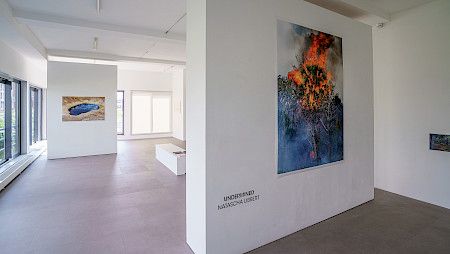
Undermined ©Matthijs Immink
After working for several years as an account manager at an advertisment agency (FHV/BBDO), Natascha Libbert decided to go back to school and so she studied photography at the Royal Academy of Arts (KABK) and graduated in June 2009. Since 2014 she works full time as a visual artist and freelance photographer. She combines commision work with her own projects.
Natascha Libbert (1973) lives and works in Amsterdam.
Gerelateerd:UNDERMINED / project
Je Verdient Het / project
Friday, June 15, 2018 - Sunday, July 29, 2018
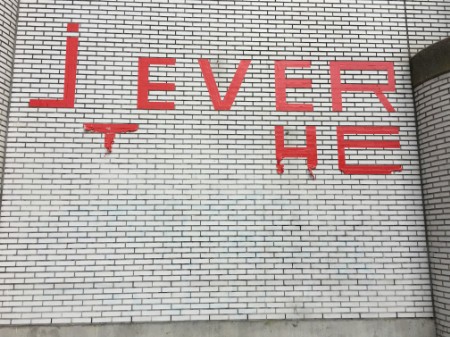
Review Parool, Verdient Het by Joanneke Meester, 2018
Je Verdient Het
Je Verdient Het, a project by visual artist Joanneke Meester, was a recurring text image in the public space around Cargo. This work by Meester was tagged on various facades in the Houthaven and the Spaarndammerbuurt. Both neighborhoods have been developed complementary by the urban planners in terms of living, working, shopping and doing business.
In the past few years, Meester has acquired notoriety with her meaningful text images, of which the content provides the spectators with food for thought. In and outside the Cargo project space, Benjamin Li and Marieke Zwart reacted to her one-liner with new work. Nina Glockner and Césare Pietroiusti showed existing work. The process of the project will be shown in the form of a stop-motion video, made by Luc Schraauwers.
Public Program
15.06 Opening, with a live column by Dirk van Weelden. You can read this column here (in Dutch).
28.06 Wie Verdient de Stad? A lecture by Floor Milikowski, author of the recently published eponymous book.
15.07 Artist Talk, in collaboration with ONSbank | Het Instituut.
29.07 Festive Finissage.
Je Verdient Het was made possible with the help of AFK (Amsterdam Fonds voor de Kunst) and Kunstwerk Loods6.
http://www.joannekemeester.com
Gerelateerd:Joanneke Meester, Marieke de Zwart, Nina Glockner en Benjamin Li / artist
Nina Glockner / artist
Nina Glockner studied philosophy in Berlin, visual art in Groningen and Istanbul and received her MFA at the Sandberg Institute in Amsterdam. Her work has been shown during festivals and in exhibitions in the Netherlands, Japan, Germany and Brazil. She is a guest lecturer at art academies in Ghent, Amsterdam and Zurich; she was a resident at the Jan van Eyck Academie in Maastricht (NL).
Gerelateerd:Je Verdient Het / project
In Medias Res / about
In Medias Res, een decentreringsmachine van Renée Kool
Vanwege het enorme spectrum aan metaforische implicaties in bijvoorbeeld film, fotografie en literatuur, raakte Renée Kool gefascineerd door merry-go-rounds. Zo fotografeerde zij jarenlang in binnen- en buitenland draaimolens en deze werd gedurende enige tijd hét onderwerp in Kools oeuvre.
Architect Wouter Thijssen ontwierp de fysieke ruimte voor In Medias Res. Op ingenieuze wijze liet hij de bezoeker in Cargo door drie opeenvolgende ruimtes bewegen waarin deze steeds nieuwe ervaringen opdeed. De soundtracks die door uiteenlopende componisten (Paul Glazier, Henk Hofstede, Radboud Mens, Hans Muller en Erik Weeda) werden gemaakt, benadrukten elk een bepaald aspect van de beleving: van vrolijk vermaak tot melancholie, hysterie en razernij.
Pieter Hugo / project
Friday, May 4, 2012 - Friday, August 31, 2012
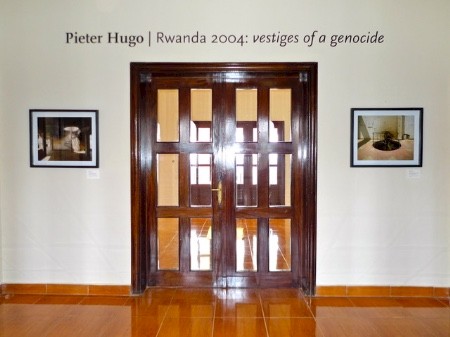
Pieter Hugo
A while before departure to Rwanda, at Cokkie Snoei's gallery in Amsterdam I saw Pieter Hugo's work for the first time in real. If I remember well the exhibit was about his project in Nollywood, Nigeria. I was quite impressed by it and after some investigation I discovered that Hugo as a young photographer in 2004 went to Rwanda where he developed his project Vestiges of a genocide. When in 2011 I finally went to Rwanda with and foundation Cargo in Context and a research grant as well Hugo's Rwanda project imposed me repeatedly.
When I had been appointed as curator in Rwesero Art Museum (The National Gallery) I suggested the former Director General to have explicitly this project on display in the museum juist. It took quite some time to get it done (like by the way the Kaddu Wasswa Archive!). Now it was another challenge to get Pieter Hugo so far. (many people accused me of bluff when I dreamed out loud about this plan and where nog optimistic about the outcome of it). The same Cokkie Snoei shared my enthousiasm and brought me into contact with Stevenson Gallery in South Africa. Their response was so co-operative and wafter some call and e-mails to one and another I finally heard that it was Pieter Hugo's intention to donate the artist's proofs of the entire project to the museum. The museum i.c. Cargo in Context would only be responsible for the costs of transport and framing. Unfortunately I was not able to share my joy about this extraordinary offer with none of my colleagues as no one had ever heard of Pieter Hugo. As the date of launching both exhibitions came close I was eager to receive the works physically as I still could not believe what had happened to me. I always supposed that I had to pick up a huge parcel at Kigali Airport but all of a sudden Mustapha, the Volcano busdriver called me that he brought a parcel fro me from Kigali. Unimaginable that at least 24 artworks by worldfamous Pieter Hugo had arrived on a roll in a dirty transport bus! Together with Yves, the technician we measured all works and took these measures to the best local carpenter who shoud make the frames. Of course quite nervous about this outstanding way of framing, I should say the result was quite rough but okay. Even worse was the glass, as until then I wasn't aware of the fact that in Rwanda there was only 3 mm glass available. This made most works quite leaden, to put it mildly. But anyway May 3rd all works had been installed on the first floor of the museum and together with Yves and Andrea Stultiens (who was next to her own project very supportive) I did a high five and was super proud that after a lot of struggle (and generosity!) we had made it.
Meanwhile the DG who had been restrictive and scary towards the whole operation for a long time, all of a sudden seemded very enthousiastic. What the hell had happend to him? Soonest I discovered he had been in contact for a while with the quite corruptive 1st secretary of the SA embassy who had learned him Pieter Hugo was world famous. But I also learned the these men had made a deal that after the opening Hugo's works would betransported to Kigali to be ondisplay for 2 weeks at the SA Embassy. I was furious and I immediately texted to Stevenson and begged them to send a new contract including a clause that under no circumstances the works left the museum. And so they did with a copy to DG and 1st Secretary. On his turn the DG furious and ofcourse no longer enthousiastic. When the minister of Sports&Culture togehter with Cultuur some press reporters got a preview he proofed to be really enthousiastic about both projects. Big relieve for the DG and so I was his heroine for a while.
After the end of the exhibition with a donation by the Amsterdam Rotary Club I have brought Hugo's work (undone from the heavy frames) again on roll by aire to Kampala where a professional framer took care of good framing work with much thinner glass. Weeks later we picked the up by car and over a bumby road brought them back to the museum.
After the removal of the museum to Kanombe in the outskirts of Kigali, Hugo's work -quite bizar - is not on display any more.
In 2011 Oodee, Londen published in limited edition Rwanda (2004), Vestiges of a genocide, with an essay by Linda Melvern.
Gerelateerd:The Kaddu Waswa Archive / project
Sunday, May 21, 2017 -
Gerelateerd:
Thierry Oussou / artist
Une histoire: le miel aux lèvres / project
Cargo in Nyanza, Rwanda
current:
upcomming:
past:
The Kaddu Waswa Archive
Friday, May 4, 2012 - Friday, August 31, 2012
Vestiges of a Genocide
Friday, May 4, 2012 - Friday, August 31, 2012
Kingship & Kinship
Photography from East, West and South Africa
Kid's Studio
Rwesero Art Museum (The National Art Gallery), Nyanza, Rwanda. From the Netherlands/Almere to Rwanda/Nyanza Andrea Stultiëns - The Kaddu Waswa Archive

Pieter Hugo - Vestiges of a Genocide
Lilian Nabulime, Médard Bizimana and Peterson Kamwathi - Kingship & Kinship
Sammy Baloji, James Uche Iroha and Santu Mofobeng - Photography from East-, West- and South Africa
In addition, Cargo initiated a Kids Studio at the museum. Liz Klaver and class mates, graphic design students from the Royal Academy of Art (KABK, The Hague) designed new signage in and to the museum and new text signs for the collection under the guidance of Roosje Klap.
Joanneke Meester, Marieke de Zwart, Nina Glockner en Benjamin Li
Je Verdient Het / artist
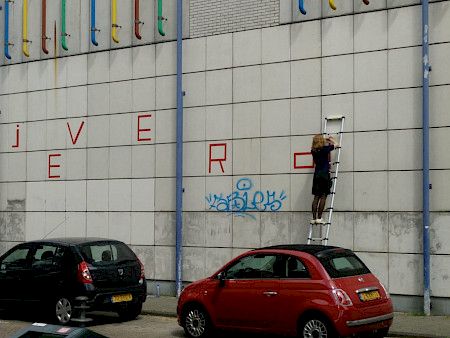
Joanneke Meester tagging a building for the project Je Verdient Het
Artist Joanneke Meester (1966) may be called a linguistic virtuoso or ‘master of language’. Always drawing on situations or emotions from her own life, she manages to touch upon highly universal and/or actual themes. Over the past ten years she has developed her very own visual language in numerous locations both in and outside in the Netherlands, by using ‘manually applied tape’, which makes her work similar in some ways to graffiti. Meester’s texts have the same anarchic quality, or at least something bold or ironic, and by crossing the boundaries they implicitly comment on the political or social status quo.
The difference with graffiti is that her work is certainly no street art. Her projects are almost always tied to a specific place or space, to which Meester makes herself subservient.
http://www.joannekemeester.com
Gerelateerd:Je Verdient Het / project

A full boat during a lecture by urbanist Ton Schaap
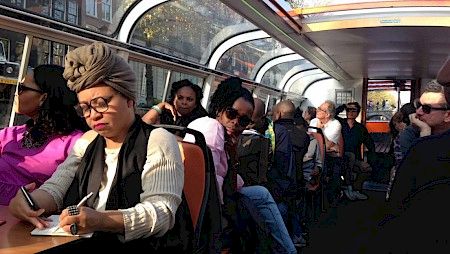
Boat tour Black Heritage Tours | Public Program Patricia Kaersenhout's Blood Sugar
Levens Compensatie Loterij / artist
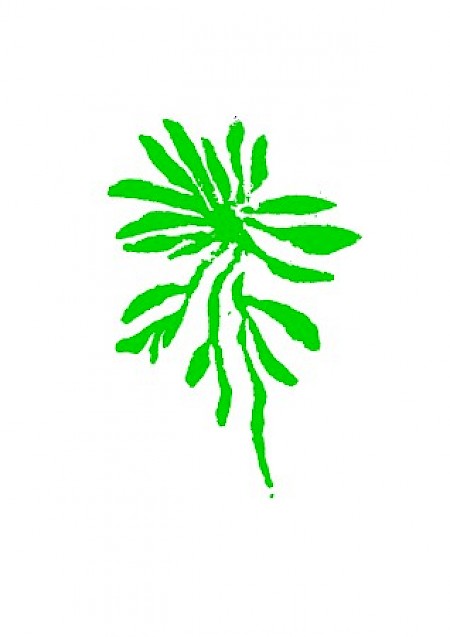
Spaghnum Moss, Suzie van Staaveren, 2022, houtsnede.
Over Suzie van Staaveren
Suzie van Staaveren (1991) studeerde in 2016 af aan de Koninklijke Academie van Beeldende Kunsten in Den Haag. De keuzes die zij in haar werk maakt, zijn een afweging tussen artistieke intenties en de toeschouwer. De afgelopen twee jaar heeft zij zichzelf een nieuwe rol toebedeeld van bemiddelaar. In haar optiek is een bemiddelaar iemand die naar compromissen toewerkt, iemand die behoeftes vanuit verschillende perspectieven onderzoekt en probeert te begrijpen en vanuit deze filosofie opzoek gaat naar een aanvaardbaar evenwicht. In haar werkwijze beschouwt zij derhalve het materiaal, de toeschouwer, de kunstenaar en de omgeving als betrokken partijen, waartussen compromissen tot stand kunnen worden gebracht. Door zichzelf in de rol van bemiddelaar te plaatsen, bevraagt zij al deze verschillende betrokken partijen inclusief haar eigen rol als kunstenaar.
Deze houding zie je ook terug in eerder werk, in de manier waarop zij zich als kunstenaar verhoudt tot de toeschouwer. In 2017 creëerde zij met de serie Shapeshifters bewust ruimte voor de invloed van anderen, met als doel de ervaring van het object op een meer tastbare manier te laten indalen en zodoende de toeschouwer en het werk dichter bij elkaar te brengen. Met twee werken uit deze won Van Staaveren dat jaar de Koninklijke Prijs voor de Vrije Schilderkunst.
De afgelopen jaren bracht zij haar rol als bemiddelaar tot uiting in relatie tot materiaalgebruik en onderzocht zij alle stappen vanaf de oorsprong van het materiaal tot aan de toepassing. Zij begon dit onderzoek door zich op één specifiek materiaal te focussen. Dit werd hout, omdat het zowel een levende entiteit (de boom) als een dood materiaal (een balk) betreft. Daarnaast, zo redeneert zij, maakt de boom onderdeel uit van een grotere eenheid: ‘het bos’. Zij verdiepte zich in het materiaal vanuit verschillende perspectieven. Begin 2019 maakte zij een onderzoekreis naar Australië, waar zij samenwerkte met een arborist (een boomspecialist). Het werk van een arborist is enerzijds constructief, door te kijken naar de manier hoe een boom of bos het beste beschermd kan worden en anderzijds juist destructief, wanneer bijvoorbeeld besloten wordt een boom te rooien voor bebouwing. Tijdens deze samenwerking heeft Suzie veel bomen gekapt, maar las zij ook het boek The Hidden life of trees (Wohlleben 2017) over de intelligente belevingswereld van bomen en hoe deze met elkaar communiceren. Dit bracht een intern conflict bij haar teweeg. Enerzijds groeide haar interesse in alle aspecten van de boom als levende entiteit, anderzijds was zij nu zelf betrokken bij het kappen van bomen. Het leerde haar echter ook veel over de motieven op het niveau van particulieren, gemeenten, wetgeving, natuurbehoud en stedelijke ontwikkelingen.
In de zomer van 2019 bracht Suzie haar verrijkte artistieke visie op hout tot uitdrukking in het project Kompromiss, waarvoor zij twee maanden samenwerkte met kunstenaar Bernice Nauta en curator Robbie Schweiger op het landgoed Kalkhorst in Duitsland. Met een lokale arborist heeft zij sculpturen gemaakt van het hout van afgestorven bomen, die zij op het landgoed vond.
Ook haar werk Necklace for a tree kwam hier tot stand. Een serie kettingen met op de hangers de Latijnse naam die zij de bomen in het arboretum rondom het landgoed omhing. Deze waren als bedoeld als een ‘goedmakertje’: zowel een spijtbetuiging als een alibi, omdat iedereen weet dat het kwaad reeds geschied is.
Het boom-imkeren en de symbiotische relaties die daarmee verbonden zijn, hebben er voor haar toe geleid verder te onderzoeken op welke manier(en) levende planten onderdeel van haar kunstpraktijk zouden kunnen zijn. Een logische vervolgstap was Plot Project (werktitel), de aanleg van een experimentele tuin op een stuk grond dat haar familie ter beschikking stelde. De aanleg van deze tuin bracht haar ervaring en een voorsprong om zo’n proces te kunnen overzien voor landschapsprojecten die zij zo mogelijk in de toekomst wil ontwikkelen.
Met de Levens Compensatie Loterij zet Suzie een logische vervolgstap in haar rol als kunstenaar-bemiddelaar. Met de Loterij bemiddelt zij de relatie tussen kunst, natuur, wetenschap en publiek door wetenschappelijke kennis over CO2-compensatie minder abstract te maken. Dit doet zij wederom met het doel deze thematiek op een even prikkelende als visuele manier met het publiek te delen.
Een onderzoeksbeurs van het Mondriaan Fonds (2021) stelde haar in staat zich in het fenomeen CO2-uitstoot en -compensatie te verdiepen en een netwerk van instituties en experts op te bouwen. Dat netwerk stelt haar nu in staat deze materie in een veelomvattend project te transformeren. Met de Levens Compensatie Loterij is het moment gekomen dat Van Staaveren haar kennis met een groot publiek kan delen door deze in beelden en events tastbaar te maken. Het ontwerp en de distributie van het lot vormt hierin het eerste statement. Het lot is een klein kunstwerk dat mensen gratis ontvangen. Vervolgens neemt Suzie tijdens haar residency in het Amstelpark verschillende groepen studenten (van basisschool tot universiteit) en argeloze parkbezoekers mee in haar zoektocht naar veenherstel, CO2-uitstoot en -compensatie. Daarop volgt de trekking die geïntegreerd wordt in een performatief evenement waarvoor Suzie niet alleen een rol in de scenografie, maar ook een in de regie en de registratie van de performance heeft. Tot slot volgt een expositie waarin de balans wordt opgemaakt van 2 jaar onderzoek en de visualisering daarvan.
http://www.suzievanstaaveren.com
Lecture / program
Thursday, June 28, 2018 -
For many years social geographer, researcher and journalist Floor Milikowski researches the changes and balances of power. Recently she published her book Van Wie is de Stad? (Who deserves the city?) (www.atlascontact.nl).
In her book alike, for her lecture in Cargo she took the audience with hand in her search for winners (money investors, landjobbers and international chains) and losers (citizens wih low and average incomes).
Gerelateerd:Je Verdient Het / project
Joanneke Meester, Marieke de Zwart, Nina Glockner en Benjamin Li / artist
A Concise History of the Amsterdam Lumber Docks / project
Saturday, August 31, 2019 - Sunday, October 20, 2019

Roomoverview of 'A concise history of the Amsterdam lumber docks.' Photo courtesy: Ab den Held
''(...) Van hout en de dingen die voorbijgaan wil de geschiedenis downloaden in de publieke ruimte (...)'' - Edo Dijksterhuis in Het Parool
Delphine Bedel - Inez de Brauw - Koos Buster - Iede Reckman
Since the growth of the world trade also lumber became a booming business. Until the end of the 19th century lumber arrived in the Netherlands via the Zuiderzee, Delfzijl and Zeeland. After the completion of the North Sea Channel in 1876 three lumber ports have been dug out in Amsterdam. From all over the world all kinds of lumber were imported, ignoring the enormous deforestation that took place at that time.
Gradually transportation of wood took place over land. Furthermore many governments forbade the import of most endangered species of wood at the end of the last century. This new era implied the decline of the lumber ports.
Nowadays, it is hard to grasp the turbulent history of the Amsterdam lumber port(s). The last two decades they were transformed into a modern, almost climate neutral residential area with about 7.000 apartments and dwellings.
In an exhibition dedicated to the history of this remarkable area, artists Delphine Bedel (photography), Inez de Brauw (painting), Iede Reckman (sculpture) and Koos Buster (ceramics) interpret some of the phases of this transformation.
Friday August 30 at 5 pm the exhibition will be opened with a live column by essayist and novelist Dirk van Weelden.
The exhibition has been made possible by the financial support of the Institut Francais aux Pays Bas, the Amsterdam Fund for the Arts (AFK) and Prins Bernhard Cultuur Fonds (PBF)
Gerelateerd:Delphine Bedel, Inez de Brauw, Koos Buster en Iede Reckman / artist
Lost Paradise: from Utopia to Dystopia / artist
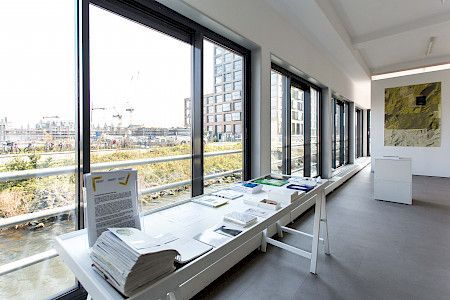
Display with artist's books. @Natascha Libbert
According to French/Dutch graphic designer and visual artist Balta (alias Anne-Marie Durand,1958 Marseille) concepts that determine one's cultural identity such as language, habits and manners should never be taken for granted. Identifying somebody offers a quite personal look at that person and their habitat. The way someone is named and framed influences the way that person will be perceived.
In her work, Balta explores all possible influences that play a significant role in someone's identity.
Balta lives and en works in Amersfoort.
Gerelateerd:Lost Paradise: from Utopia to Dystopia / project
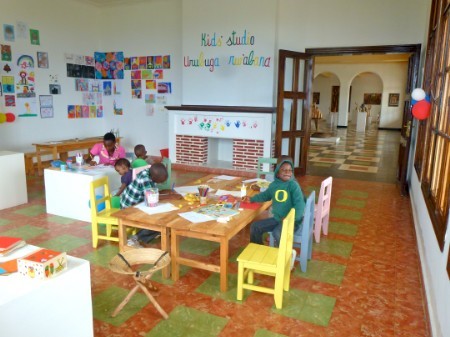
Nog zo'n misvatting van mij als muzungu-curator toen ik Andrea Stultiëns vroeg of zij nav haar expo in het museum niet een reeks multiples voor de verkoop in en tbv het museum wilde vervaardigen. Dat deed zij terstond en zo ontving het museum 10x10 zwart-wit fotowerken van 40x40cm. De misvatting bestond hieruit dat natuurlijk geen enkele Rwandees RWfs 25.000 (= € 25) zou uitgeven voor een foto, die ook nog niet was ingelijst. Het bedrag is een tiende van een minder dan gemiddeld maandsalaris. Kortom er werd ter plekke geen enkele foto verkocht. Ik heb deze toen via internet in mijn eigen netwerk te koop aangeboden en was ze in een mum van tijd kwijt en voor het museum € 2.500 rijker. Weer werd naar de lokale timmerman getogen die een grote opdracht kreeg voor 2 kasten, 5 tafeltjes en daarom heen stoeltjes te maken. Toen de Nederlandse architect Anne Feenstra ttv de plannen voor een Kid's studio het museum bezocht, opperde hij om voor de muren alle buitenlandse bezoekers te vragen schoolkinderen uit diverse landen tekeningen voor de studio te sturen. Dat bleek een geweldig succes, want in binnen 4 maanden was een goeddeel van de muren bedekt met tekeningen uit India, de VS, Nederland, Engeland, Frankrijk, België en nog zo wat landen. Daarnaast brachten aangekondigde bezoekers legio kleurpotloden, teken- en plakpapier en ontzettend veel kinderboeken mee naar het museum.
Echter nog een misvatting was, dat die Kid's studio natuurlijk vooral voor de kinderen uit 'the villages' was bedoeld, die mondjesmaat naar school gingen en al helemaal geen freubeltijd hadden. Maar hoe kreeg je die kinderen naar het museum? Collega Fiona Umitoni stond te popelen om zich met de kinderen bezig te houden; voor Koornzaayer, een Nederlands Fonds, leek een aanvraag voor een educator in het museum heel realistisch. Afgezien van het feit dat de DG het eventuele geld hiervoor liever voor iets anders aanwendde, moest er bovenal eerst een recruter komen om die kinderen het museum in te krijgen. Nou het kwam er gewoon niet van en hoe vrolijk, rijk geoutilleerd en werelds de studio er ook uit zag, deze bleek vooral door kinderen van toch al bevoorrechte bezoekers te worden benut.
Na de verhuizing van the National Art Galleru naar Kanombe, bleek er weinig van de Kid's studio over; onderdelen als stoeltjes slingerden door het nieuwe onderkomen; kunsteducatie stond helaas nog steeds niet op de to do-list van het museum.
On-Trade-Off; The Weight of Wonders / project
Friday, November 15, 2019 - Saturday, December 21, 2019
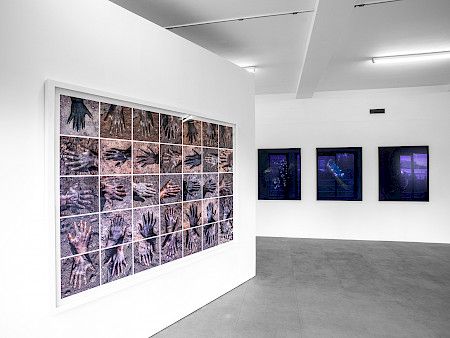
On-Trade-Off; The Weight of Wonders: works by Georges Senga and Marjolijn Dijkman. ©Aatjan Renders
On-Trade-Off; The Weight of Wonders
With: Sammy Baloji, Marjolijn Dijkman, Maarten Vanden Eynde, Musasa, Jean Katambayi, Georges Senga and Daddy Tshikaya
On-Trade-Off is a long-term artistic research project by an international group of artists, filmmakers and researchers, that want to bring attention to the ecological and economic implications of the extraction and processing of lithium, the most important natural resource for the world- wide production of ‘green’ energy. In the West, lithium is presented as a major step in the production of a green economy, while the burdens for the local population, where lithium is extracted, are neglected.
On-Trade-Off follows the trace of lithium from its origin, namely the mining town Manono in the Democratic Republic of Congo (DRC), where the largest lithium ore supply in the world has been discovered. Lithium has been named ‘the new black gold’. A diverse group of artists follows the international trade route via Australia and China to Europe.
By using one chemical element – Li3 – On-Trade-Off zooms in on the social, ecological, economical and political aspects that are present in almost all production processes since the triangular trade in the 16th century. Think of the inhuman labour during the extraction,
the economical inequality to sustain economical growth by all costs and the ignorant end users that are not aware of what will happen to the purchased goods. By exposing the full supply chain of lithium, the (seemingly independent) elements that sustain this recurring imbalance, are connected and made visible.
From Manono (DRC) the journey continues to Australia, where the Tesla Energy Storage System is, currently the largest battery in the world and then to China, the largest producer of lithium batteries that are massively exported to the West. Speculatively, the route ends in Africa, where a lot of electronic waste is dumped and is therefor returned to its origin, completing the triangular trade.
On-Trade-Off is developed in several spaces, in diverse forms and contexts, where each presentation or spin-off focuses on different elements of the larger story. Collaboration and exchangeis created everywhere with an abundance of people and organisations with diverse backgrounds, such as visual artists, curators, local communities, NGOs, filmmakers, thinkers, activists, computer engineers and designers.
The project exists of a series of new individually and collectively made art works. These are developed during three years and are the result of collectively acquired knowledge and gathered research material around the subject. Each of the participants approaches On-Trade-Off from their own artistic interest and media and the collected research material will be made available to all participants as open source. This introduces a more sustainable form of (art)production.
Cargo in Context & Flemish Cuture Center de Brakke Grond
Cargo and De Brakke Grond have combined their strengths for a first presentation in the Netherlands of this extensive project. Previous stages of this project were presented at Contour Biennal Mechelen (BE), Galerie Imane Farès (FR) and the current Lubumbashi Biennale (DRC).
The project has been made possible by various sponsors and the Thami Mnyele Foundation.
Patricia Kaersenhout / artist
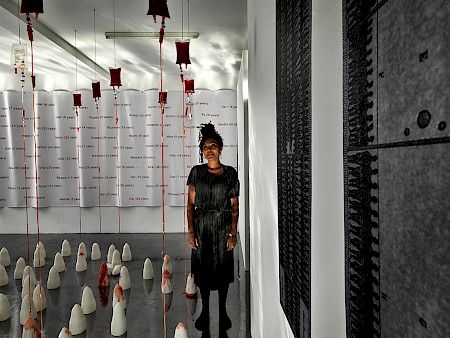
© Aatjan Renders
Patricia Kaersenhout (1966)
Visual artist/cultural activist/womanist
Born in The Netherlands out of Surinamese parents, Patricia Kaersenhout since many years embarked on an artistic journey, in which she researches the impact and consequences of the invisibility of the African diaspora and (post)colonialism in relation to her education in a West-European culture. In her work she questions the political changes within the current African diaspora in relationship to feminism, gender, racism and the history of slavery.
Patricia Kaersenhout has exhibitions both in The Netherlands and abroad. She lectures on a regular base about her work in relation to de-colonial theory and she has been appointed at the de-colonial summer school in Middelburg. At the Willem de Kooning Academy in Rotterdam she has taught Global Arts and Social Practice. She now supervises students with their final exams at the HKU in Utrecht. Since 2014 she is adviser of the Mondriaan Fund.
Kaersenhout lives and works in Amsterdam
Gerelateerd:Blood Sugar / project
UNDERMINED / project
Friday, June 14, 2019 - Saturday, July 27, 2019

News paper Het Parool Thursday June 14th, Opening's eve
Natascha Libbert (1973)
Natascha Libbert studied photography at the Royal Academy of the Arts (KABK). Since 2014 she is a full time visual artist/photographer, alternating free work with commissions. She worked for the ING Collection, the Ministry of Cultural Heritage, Marie-Stella Maris Foundation, various museums and for law firm Kennedy Van der Laan. One of the last commissions she realised was for the Province of Noord-Holland, for whom she pictured the famous locks in the port of IJmuiden, in the process of being replaced. This commission resulted in Libbert’s personal search into the world of shipping which she recorded in her recently published book I went looking for a ship (The Eriskay Connection).
Libbert’s work mostly deals with landscapes which at first glance appear innocent, but in which she delicately traces human presence and behaviour. In Cargo she investigates our attitude towards the earth in the anthropocene.
Libbert lives and works in Amsterdam
Rearrangement of priorities #2 Rainbow Soulclub - March 8 - March 24 / lesol
REARRANGEMENT OF PRIORITIES #2
A Rainbow Soulclub cocktail of politics, painting, poetry and coconuts.
The Rainbow Soulclub is a collective of individuals, that operates from the Blaka Watra walk- in centre of the Regenboog Groep, an Amsterdam-based organization that is committed to helping the homeless and drug addicts. The Rainbow Soulclub was founded in 2005 by visual artists Saskia Janssen and George Korsmit, who with the Rainbow Soulclub orchestrate weekly encounters and collaborations between artists, art students and Blaka Watra’s clients. Over the last 14 years these encounters have spawned a whole diversity of activities: painting, writing, publishing, drawing, pottery, recording music, making costumes, launching campaigns, staging exhibitions, and even travelling to Ghana and Suriname.
Under the title Rearrangement of Priorities #2, the Rainbow Soulclub is serving up its latest cocktail of politics, painting, poetry and coconuts for you.
www.instagram.com/rainbowsoulclub
Annaleen Louwes / project
Friday, September 21, 2018 - Sunday, November 4, 2018

FERNWEH. Photo: Aatjan Renders
FERNWEH
In 2018 Cargo was invited to be part of the City Program of Unseen Amsterdam, for which we invited Dutch photographer Annaleen Louwes to develop a new project. With FERNWEH, Louwes explored the human condition by mixing up both old and new work, photography and film. With this mixture, she tried to create an atmosphere of mortality, ambiguity, and temporality. By doing this, Louwes tended to discover an unexpected relationship between the old and the new.
Hanne Hagenaars wrote a review about the project. You can read it here (in Dutch).
Public Program
21.09 Opening, with a third live column by film critic and writer Basje Boer, inspired by Louwes' newest project. You can read the column here (in Dutch).
21.10 Artist Talk Stretching the boundaries of Photography. Moderator: Lilet Breddels
04.11 Finissage, with a performance by Nina Glockner.
FERNWEH was made possible with the support of the Mondriaan Fonds.
Gerelateerd:Annaleen Louwes / artist
HOME (2019) / project
Thursday, June 4, 2020 - Saturday, July 25, 2020

Natascha Libbert - Home (2019)
HOME (2019)
Natascha Libbert
Cargo in Context participates in UNLOCKED/RECONNECTED, a collective exhibition which will connect a large part of art platforms and institutes throughout the country and online. Cargo is pleased to be a link in this chain. During the lockdown we experienced how art and culture proved to be so important. And although there was a strong online presence of exhibitions and films (and we undoubtedly read many more books), we missed our museums, art spaces and theatres. We are in dire need for the restart of 1:1 contact with art.
Each venue participating in UNLOCKED/RECONNECTED will choose one work that is related to the notion of home. The point of departure for UNLOCKED/RECONNECTED is the idea of solidarity, the will to reflect collectively on what home is. Our world must not become fragmented, fractured into enclosing walls: a consolidation of forces and locations, national and international, can in fact show us what the house/home can mean.
As our country and our Europe gradually unlocks itself, we look back on a period in which our gaze was specifically focused on our own home and perimeters. During the course of the lockdown, our gaze turned inwards as we came to terms with the conditions of a global pandemic and borders were resurrected. With Home, Natascha Libbert would suggest that for many the concept of home was not and is not, a given.
Upon arrival at a participating venue, visitor receive a QR-code on their smartphone and so will have access to the website where they can find more information about the work, the artists and the venue.
UNLOCKED/RECONNECTED is an initiative of galleries Dürst Britt & Mayhew – The Hague and Tegenboschvanvreden – Amsterdam.
Gerelateerd:
UNDERMINED / project
Thierry Oussou / artist

Thierry Oussou exploring the Houthaven
Thierry Oussou (1988, Allada, Benin) lives and works in Amsterdam, the Netherlands and in Benin. Oussou refers to his current practice as social archaeology, exploring the relationship between contemporary art and ethnographic objects. Through paintings and drawing installations he frames questions around authenticity and visibility in relation to heritage and archaeology. In 2011, Oussou founded Yè Art Studio and has since continued to give art and visual culture workshops in institutions across Benin.
Oussou was a resident artist at the Rijsakademie van Beeldende Kunsten, Amsterdam (2015-2016). In 2016, he was awarded the first Jacqueline van Tongeren Fellowship at Rijksakademie V.B.K. and was nominated for the Dutch Royal Award for Modern Painting.
Gerelateerd:Une histoire: le miel aux lèvres / project
Marieke Zwart / artist
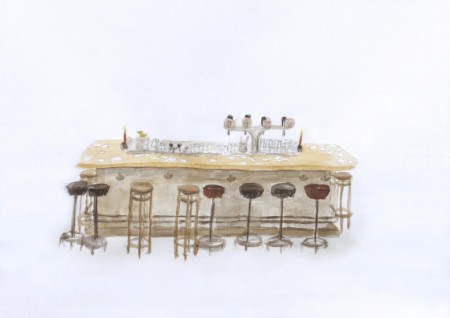
Push/Fall/Repeat, 2017 nr 3 of Lithographic series (of 6)
Marieke Zwart is an artist based in Amsterdam. In her work she explores spaces of contact, through a practice that is based on drawing and video works. Her works are built from socially engaged practices, reflecting on art historical and relational issues. She is interested in social definitions of empowerment and independency, the Dutch colonial past and personal narratives in relation to society.
Gerelateerd:Je Verdient Het / project
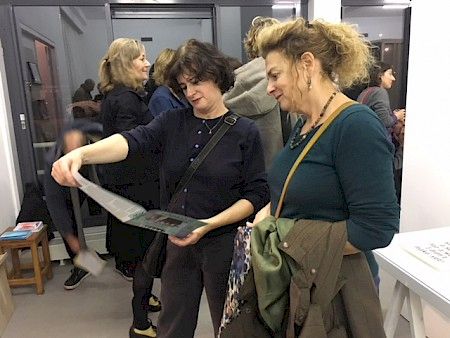
Opening Smoke and Mirrors 10-11-2017
Deuce: Artist talk moderated by Bert Steevensz April 22 2018 / program
Sunday, April 22, 2018 -
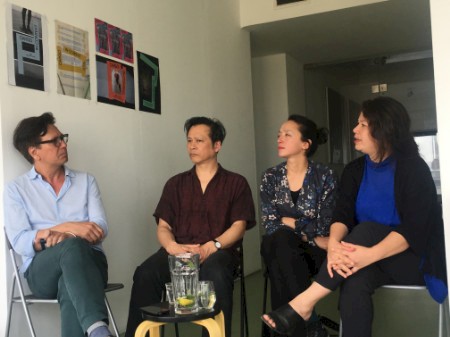
Bert Steevensz, Tiong Ang, Christine van den Bergh and Naro Snackey
Gerelateerd:Naro Snackey / artist
DEUCE / project
Panel discussion ON PROPERTY and The Real Estate State July 2020 / program
Monday, November 16, 2020 -
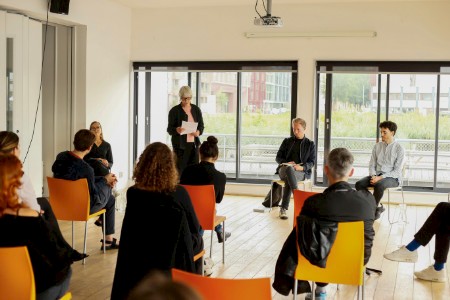
Lilet Breddel reads out loud her column preceding the panel discussion
As On Property investigates the complex influence that ownership has on culture, political economy, production, distribution, and discusses possible alternatives.
During this panel discussion Denisse Vega de Santiago (researcher, editorial team Volume Magazine) goes into conversation with: Nick Axel (e-flux Architecture, Head of the Architecture dep. Rietveld Academie); René Boer (researcher 'Architecture of Appropriation. On Squatting as Spatial Practice’ Het Nieuwe Instituut); Maria Dantz (Spacemaker AI) and Fenna Haakma Wagenaar (Design Lead City of Amsterdam).
When: Thursday July 16 7.30 pm!
Gerelateerd:On Property / project
Remco Torenbosch / artist
Launching Weg die muur! (Pull down that wall!) / program


Met dank aan AFK en PBF
Gerelateerd:Aimée Zito Lema / artist
On-Trade-Off: screening of The Congo Tribunal, continued by an artist talk / program
Sunday, November 24, 2019 -
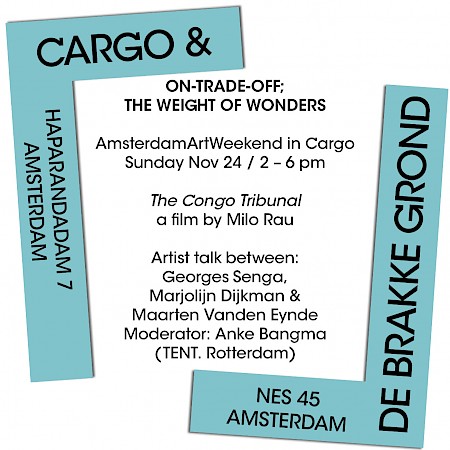

Within the frame of the Amsterdam Art Weekend 2019 Sunday November 24 Cargo organised and hosted in collaboration with the Brakke Grond an intensive public program with a film screening and artist talk.
The Congo Tribunal Milo Rau 2017
For more than 20 years an inexplicable Civil War is turning a territory as big as western Europe into hell on earth. Triggered by the Rwandan genocide in 1994, the Congo War, also called the "Third World War", has claimed six million lives. Many observers not only see in it a fight about political predominance in Central Africa, but also one of the most decisive economic battles for the share in the era of globalization. The reason for the continuance of this war are no longer based on ethnic differences rather than raw materials for technology which are essential for the 21st Century. Nowhere else in the world, the superposition of global interests of the great national economies, local power claims, the colonial past and the post-colonial present are more exemplary than in this crises region. Will the future order of the global community be decided here? Milo Rau's "The Congo Tribunal" examines the causes and backgrounds to this, so far biggest and bloodiest economic war in human history in a unique and stunningly transmedia art project.
After a break the program continued with a vivid conversation about the essence of the on-going-project On-Trade-Off between visual artists Marjolijn Dijkman, Georges Senga and Maarten Vanden Eynde; Anke Bangma, artistic director of TENT. in Rotterdam acted as moderator.
Gerelateerd:On-Trade-Off; The Weight of Wonders / project
A project in public space in Spaarndammerbuurt en Houthaven / project
Friday, August 27, 2021 - Saturday, October 23, 2021
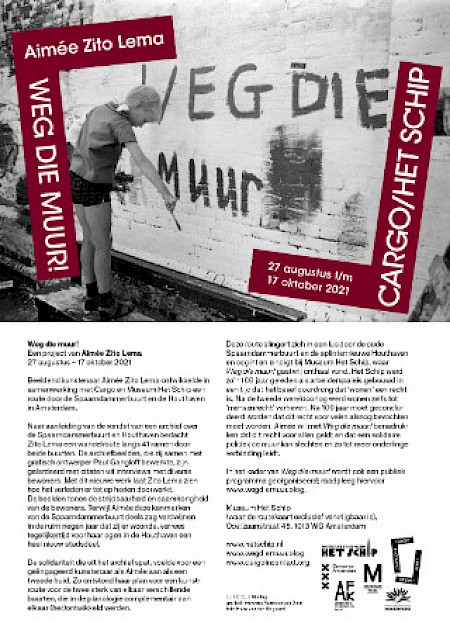
Flyer weg die muur!
About Weg die muur!
Aimée Zito Lema lives quite some years in the Spaardammerbuurt in Amsterdam. Recently she came across an archive with fascinating visual material and other docs about her neighborhood that covers a period of 1940-1990. This archive unveils a lot about this original working-class area, where once (and still) lived many communists and socialists. In those days many of the residents worked in the neigbouring Timber Port and in the local sugar factory. The visual material and texts reflect quite well their struggle and protests against dilapidation, innovation, housing shortage, unemployment, poverty et cetera.
De Spaarndammerbuurt (SPA) in the old days and now | The (new) Houthaven (HOUT)
Nowadays the Spaarndammerbuurt is liable to gentrification. Nevertheless it still is a typical Amsterdam working-class area. At the beginning of this century residents looked with Argus' eyes to the plans for city extension and especially at the transition of the Houthavens (Lumber ports) into a large scale residential area. In the urban development plan of of the Houthaven included an upgrading of Spaarndammerbuurt. Shopping and wellfare has been delegated to ‘Spaarndam’ toegewezen and housing and recreation to the (new) Houthaven. The complaint of the existing area that with the Houthaven it would be excluded from its connection with the shores of the river IJ, would be compensated with a tunnel below the connecting road between the two neigborhoods and besides a huge alongated park in beween both areas. The dedication of the urban planners was to generate as much as possible social cohesion between the two. In spite of these well-intended ambitions of the city-planners, due to the economical crisis (2008-2014) much of the social housing in the Houthaven has been scratched. In the year 2021 the Houthaven is labeled as ‘’yuppy area’’ and not too seldom one now speaks of the 'poor' (Spa) and the 'rich' (Hout) neigborhood.
However it is Zito Lema’s ambition trying to stop this gap with a temporary serial public art work. The atmosphere between the most divers kids and their parents primary school De Spaarndammerhout, on the edge of both neighborhoods makes her optimistic.
Zito Lema intends to select and revise parts of the archive and combine these with significant quotes from the interviews with actors from both neigborhoods. Her main focus will be on the residents she comes across in the images, but will also head to architectural and typographical elements on buildings and protest banners. A combination of all these elements will be included in a range of about 50 designs Aimée intends to realise with graphic designer Paul Gangloff. Meanwhile she has engaed a local Irakese master tailor to size all curains exactly on the smaller and bigger selected windows. These curtains will be hun behind the windows of private houses and shops along an organic routing from SPA to HOUT and back again. A roadmap is available at Museum Het Schip, that for the occasion will host Cargo and Zito Lema's project. It is here the route will start and end.
For Aimée the idea of curtains synbolizes ultimately 'the inside' and 'the outside' and will consequently take care of the connection between private lives and public space, between the individual and community, between history, present and future. For Aimée curtains stand for keys to connection, between the 2 neighborhoods and their residents.
Within the frame of this project as usual tfor Cargo we will organize an intensive public programme. Besides a live column during the opening so far, we are planning a lecture or round table talk, a walk supervised by ARCAM, a workshop 'Making protestbanners', a summer theatre workshop for youngsters. All programs will take place on typical locations like Museum Het Schip (opening and lecture), community center Horizon, campaign center de Rode Morgen, breeding place for creatives (Bonte Zwaan), Polanen theatre and Hebron Church.
Together with interns Emma Hogendorp and Marie van der Veen (both UvA master students Culture and Politics) Aimée explores the archive and the three of them take care of all interviews in both neighborhoods.
Gerelateerd:Aimée Zito Lema / artist

Opening Smoke and Mirrors, a project by Maurice Bogaert
Maurice Bogaert / artist
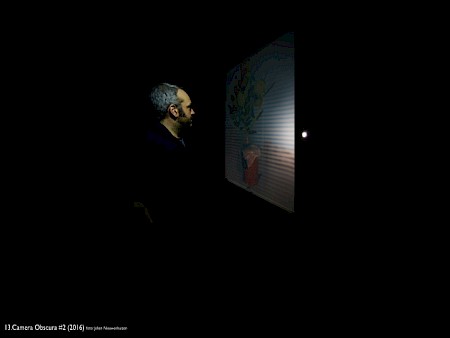
Maurice Bogaert (Heerlen 1975)
Bogaert studied at the Academy of Fine Arts in Maastricht and got his master at the Piet Zwart Institute in Rotterdam in 2001. In recent years Bogaert has developed a body of works in which he included media like architecture, film, texts and fine arts. This mostly resulted in a kind of total experience for the audience. His works vary from extremely monumental walk through installations to most tiny scale models. All his works are efforts to translate camera movements and editing into the physical space.
Bogaert lives and works in Amsterdam.
Gerelateerd:Smoke and Mirrors / project
About Cargo / about

Cargo's logo
Cargo was a nonprofit arts organization founded in 2002 by Lia Gieling and based successively in Almere, Nyanza and Amsterdam. Cargo had a four-member board, including chairman. This was done remotely, but it did take a critical look at its original objectives. In doing so, the board was mindful of the risks that could arise from the activities of the nonprofit initiative.
Cargo board
Paul 't Hart, Professor of Public Administration UU (chairman)
Wytske Visser, independent curator (secretary)
Marjolijn Bronkhuyzen, independent moderator and coach (member)
Joseefke Brabander, Faculty Director Akademie voor Bouwkunst, Amsterdam (treasurer)
Cargo in Context had an ANBI Status which means that the tax authorities designated Cargo as an Institution for General Benefit.
About Cargo's founder
Lia Gieling (1951) has been active in the Dutch arts field since the early 1980s. She studied Art History (BA) and Theater Studies (MA) and tries to connect these disciplines, as well as landscape, film and architecture, as much as possible. In her art practice, she aims to pair beauty with social significance, with projects that are preceded by intensive research. Locality of the various projects is also a common thread in her career.
Colophon
text: Lia Gieling/Emma Hogendorp
graphic design: Vanessa van Dam
website: Lasociale/Stef Kolman
(Administration: NAHV, Amsterdam)
About this website: Cargo's website can be read like a newspaper, the pictures changing place by the second. While browsing, the site feels like a voyage of discovery through the Cargo landscape. Just follow the categories and their links above and you will automatically get to where you want to be.
Affected / about
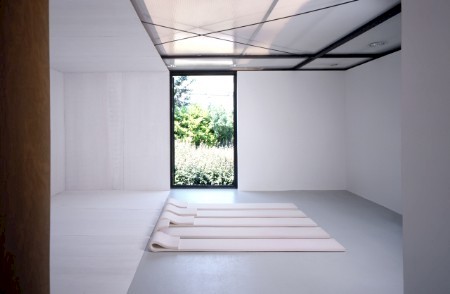
Baukje Trenning ©Corne Bastiaansen
Baukje Trenning – Affected (26.05.2002-07.07.2002)
I got to know the work of Baukje Trenning as a result of a project commissioned by the Rijksbouwmeester in Hansweert/Zeeland. On an enormous storage site of the Department of Public Works, she rearranged all the hard building materials, resulting in a wonderful landscape. The materials that Trenning manipulated and shaped, immediately evoked associations with the way in which the urban planning Godfathers had manipulated the barren polder plain with their designs and buildings.
I became intrigued by the young artist/designer and visited her in her studio. Graduated from the Design Academy in Eindhoven, she appeared to have applied herself to the properties of materials and especially the hard kind. I invited her to the first project in Cargo, thinking I could display her work to show how hard can also be soft. This to refute the oft-heard prejudice that Almere consists only of boring bricks.
Anno 2022 Baukje Trenning is a lecturer at the Academy of Architecture in Amsterdam and with her idiosyncratic designs in (brick) stone is much in demand by architects and the hard industry.
Cargo in Context / contact
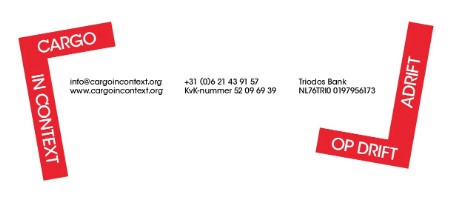
Cargo in Context
e: info@cargoincontext.org
m: +31 (0)6 21439157
Legal status body Cargo in Context
Cargo in Context is a foundation, with ANBI-status, registered at the Kamer van Koophandel Amsterdam, under number 52096939
Cargo-board
Paul ’t Hart, professor Public Administration Utrecht University (chair)
Wytske Visser, independant curator (secretary)
Marjolijn Bronkhuyzen, independant coach and moderator (member)
Joseefke Brabander, faculty director Academy for Architecture and Urban planning (treasurer)
Lia Gieling is the founder of and curator at Cargo; and since September 1st 2019 part-time supported by Marleen Schans (MA Museum Studies).
Keep me updated
Annaleen Louwes / artist
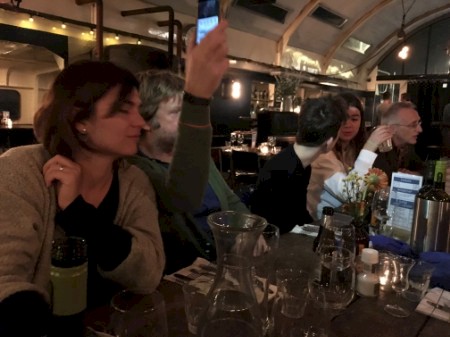
after party DUSK, Annaleen Louwes kicked of January 29 2017
Annaleen Louwes (Zevenhuizen, 1956)
The photographical work of Annaleen Louwes can be characterized by probing portraits of vulnerable people: psychitaric patients, female prisoners or just ordinairy people she has come across. Louwes' patient eye highlights their extreme vulnerability with their inner beauty. Without any personal judgement she therefore invests them with self esteem and emphasises the human condition in her work.
Gerelateerd:
DUSK / project
FERNWEH / project

Hicham Khalidi (director Jan van Eyck Academie) during the opening of 'On-Trade-Off; The Weight of Wonders'
Live column on the occasion of the opening of On-Trade-Off; The Weight of Wonders
By Hicham Khalidi (director Jan van Eyck Academie), 15 November 2019
I was interested in a sentence that I read in the briefing of this project, which was that knowledge of extracted goods being used in computers and smartphones did not make it back to its point of departure. Meaning that the people who extracted the lithium that much of this show is about, might not know about the use of this material and that they subsequently do not benefit from it. This hits the nail on its head. It is exactly the obfuscation of knowledge that renders this inequality. And not only the miners being disconnected from this knowledge, but the lack of knowledge in general. The ones who are in some cases entitled to cast a vote, and certainly this is not the miners but us, do not know enough to make the right decisions, are being led away from the right information or simply are misinformed? One could talk of broken systems, but the problem is, how do we know if a system is broken if we cannot see clearly the relationships that make the system? How can we relate the livelihood of the miner in Manono to a user of a mobile phone or a computer? A system consists of elements that have dependency of which the dependency must be known. A set of a priori requirements are necessary to know whether we have a good system or a bad system. Information is key. Not only information from part to part, but also information about how to look at it. We need a top view.
This exhibition attempts to give you some of that and much is left by the artists in this show for further discussions around the world with people on the ground in order to get a better view on how things work. From the Australian mines to Chinese manufacturing and back to the pickaxe of Africa, and indeed the pickaxe looks like the logo of a Tesla car as beautifully stated in one of the works in the show. It is an image of its implication.
It is these interdependencies and relationships between for instance desire, energy use, resource extraction and inequality and how information and awareness play a role that is beautifully laid out in this exhibition. If any, this exhibition attempts to scrutinize these relationships to foster an awareness of the self and our environment and perhaps with this we are seeking what kind of systems or world we would like to live in and if these systems work at all.
This is what we need, we need to offer people insight into these complexities. And next to this, we must consider our role as artists as well. As the writer, Amitav Gosh explains: “Culture generates desires — for vehicles and appliances, for certain kind of gardens and dwellings— that are among the principal drivers of the carbon economy”. How do we as artists relate to our position in the circulation of desire, energy and extraction for instance? What is our exit from a carbon-based economy?
And back to the miner, it would be so easy to close the loop between the one who carries the pickaxe, the surplus created by it and the flowing back of this surplus to the source of its making? It could be so simple, we are all co-owners of this world, but it is all the harder because we need to define what the top view of all of this is and how to own it together.
Cargo and editions
Cargo asks artists who develop their projects to create a work of art in a limited edition. Such offers a unique opportunity to be the owner of a piece of art for an affordable price. Both the artist and Cargo work on non profit lines. With a purchase, you support all parties, including yourself.
Below a list with available editions.
Patricia Kaersenhout | Blood Sugar
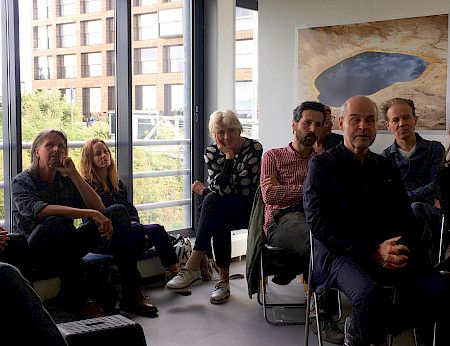
with Nan van Houte, Gerco Ruijter, Reyn van der Lugt, Taco Hidde Bakker, Nick Huls, Frank van der Stok, Petra Noordkamp and about 40 other listeners.
Annaleen Louwes | Fernweh / edition
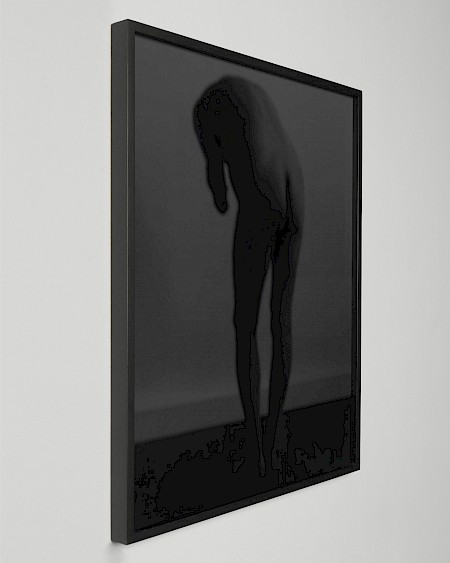
© Annaleen Louwes
of DUSK (2017) by Annaleen Louwes stills are still available on demand in various measurements;
of Fernweh (2018) by Annaleen Louwes an edition of 10 there
2018
various sizes
edition of 10
Digital print on paper
unframed: € 300,= | framed: € 350 (excl. 6% BTW)
Patricia Kaersenhout | Blood Sugar / edition
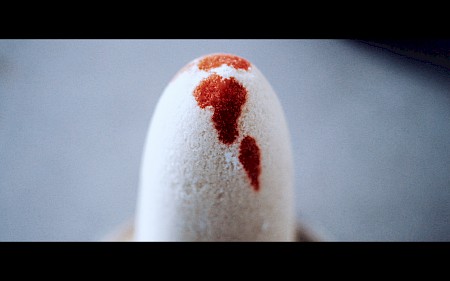
© Patricia Kaersenhout
On the occasion of her project Blood Sugar Patricia Kaersenhout made this riso-print in an edition of 20 copies. This is a still from the documentary Amsterdam, Traces of Sugar (2017) by Ida Does (camera: Jurgen Lisse; editing: Cam Does).
2017
edition of 25
Riso print
unframed: € 175,= | framed: € 175 (excl. 6% BTW)

View on Fernweh; image: Aatjan Renders
Projects
current:
upcomming:
past:
Weg die muur! (working title)
Friday, August 27, 2021 - Saturday, October 23, 2021
De Levens Compensatie Lottery
Tuesday, September 1, 2020 - Friday, September 30, 2022
On Property
Thursday, June 4, 2020 - Saturday, July 25, 2020
UNLOCKED/RECONNECTED
Thursday, June 4, 2020 - Saturday, July 25, 2020
Rearrangement of Priorities #7
Thursday, February 27, 2020 - Saturday, March 21, 2020
On-Trade-Off; The Weight of Wonders
Friday, November 15, 2019 - Saturday, December 21, 2019
A Concise History of the Amsterdam Lumber Docks
Saturday, August 31, 2019 - Sunday, October 20, 2019
UNDERMINED
Friday, June 14, 2019 - Saturday, July 27, 2019
Impossible Journeys to the Netherlands, Russia and Persia; now and then
Friday, May 10, 2019 - Saturday, June 8, 2019
Lost Paradise: from Utopia to Dystopia
Friday, March 29, 2019 - Saturday, April 20, 2019
Rearrangement of Priorities #2
Friday, March 8, 2019 - Saturday, March 23, 2019
FERNWEH
Friday, September 21, 2018 - Sunday, November 4, 2018
Je Verdient Het
Friday, June 15, 2018 - Sunday, July 29, 2018
DEUCE
Friday, April 6, 2018 - Sunday, May 27, 2018
Smoke and Mirrors
Friday, November 10, 2017 - Saturday, December 23, 2017
Blood Sugar
Friday, September 1, 2017 - Sunday, October 22, 2017
Une histoire: le miel aux lèvres
Saturday, April 1, 2017 - Sunday, May 21, 2017
DUSK
Wednesday, February 1, 2017 - Sunday, March 19, 2017
Cargo in Amsterdam / about
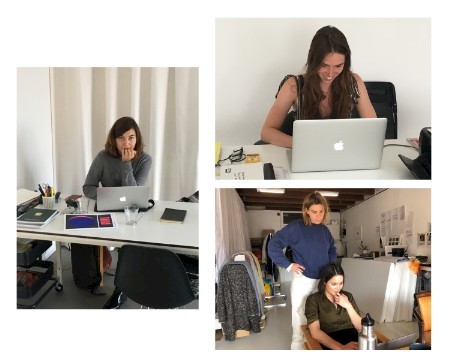
Cargo in Context team: Anna Kućma (left), Laura Bokhoven (top right), Marie van der Veen (bottom right, standing) and Emma Hogendorp (bottom right, sitting).
About Cargo in Context and Cargo Adrift
Cargo in Context was the resumption of Cargo, a non-profit project space that was founded in 2002 on de Realiteit in new-town Almere. After founder Lia Gieling had made quite a detour since October 2016 Cargo has landed in de Houthaven in Amsterdam. Specifically in de Bonte Zwaan (the Multicoloured Swan), a former ship for the shipper’s exchange, now a breeding place for various creatives. Soon after the COVID-19 pandemic in 2002, it became clear that Cargo would have to give up this unique location, as the rent took a disproportionate toll on its modest working budget. After 4 years of programming August 1 de Houthaven unfortunately belongs to Cargo's past and since the we litterarely went ADRIFT. Together with artists Cargo continued in full force developing projects with urgent topics from scratch to contribute to the social debate and the role of art and artists in it. Per project an intensive ‘public program was composed to deepen the issues of the project for a broad audience. In October 2022, Cargo decided to conclude for good. Find the last newsletter here.
Click this link for Cargo's projects in Amsterdam.
Sammy Baloji (DRC), Marjolijn Dijkman (NL), Maarten Vanden Eynde (B), Musasa (DRC), Georges Senga (DRC) en anderen / artist

Lithium (L3) Maarten Vanden Eynde and Musasa
Gerelateerd:On-Trade-Off; The Weight of Wonders / project

Je Verdient Het - Workshop Khalid Amakran in collaboration with ONS-Bank | Het Instituut / program
Thursday, February 15, 2018 -
Van Hout en die dingen die voorbijgaan: boat tour along the shores of the Houthavens, lead by utbanist Ton Schaap / program
Sunday, October 6, 2019 -
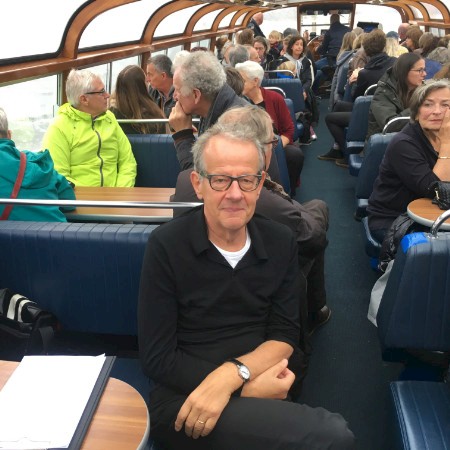
It promised to be a calm boat tour along the shores of the Amsterdam Houthavens, however due to the beastly weather it turned out to be ''a tour on the northern Bering sea''. The adventures and anecdote of urbanist Ton Schaap drowned out the tough noice of the torrential rain. The boat was fully booked with an audience that was all ears.
Gerelateerd:A Concise History of the Amsterdam Lumber Docks / project
Delphine Bedel, Inez de Brauw, Koos Buster en Iede Reckman / artist
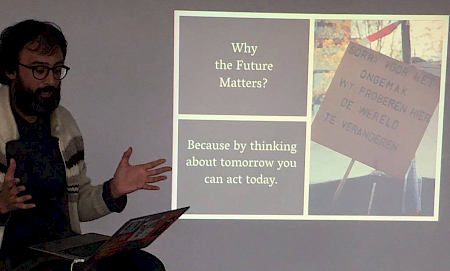
Lecture by Christiaan Fruneaux co-founder of Monnik, studio for futures and fiction
Trailer / about
Bernhard Kahrmann – Trailer (18.05.2003-29.06.2003)
Ik leerde Bernhard Kahrmann kennen tijdens een atelierronde op de Rijksakademie in Amsterdam. Beiden waren we gefascineerd door grootstedelijke ontwikkelingen. Het project waar hij op dat moment aan werkte, was nog verre van af. Toch wist ik hem te verleiden dit project als pilot in Cargo te laten zien.
Lees hier de door mij geschreven column terug.
https://www.bernhardkahrmann.com/
Guest programming / project
Friday, May 10, 2019 - Saturday, June 8, 2019
ON PROPERTY: screening PUSH (2019) with an introduction by Indira van 't Klooster / program
Thursday, July 9, 2020 -

screening PUSH
PUSH (2019) Fredrik Gertten - Thursday July 7.30 pm
Public Program ON PROPERTY - part 1
In her introduction, ARCAM-director Indira van ’t Klooster showed the phases of the social housing policy in Amsterdam, from 1900 until today. Since the economical crisis the invasion of foreign investors in the housing market in Amsterdam has led to an enormous housing crisis. Van 't Klooster's introduction proofed to be a perfect link to the screening of PUSH, a documentary in which Swedish filmmaker Fredrik Gertten followed former UN-delegate Leilani Farha in her fight against the transformation of housing from a human right into an asset, that is exploited by investment firms like Blackstone.
Gerelateerd:On Property / project
ON PROPERTY: Panel discussion and The Real Estate State July 16 2020 / program
Remco Torenbosch / artist
Naro Snackey / edition

Ancestor portrait and ceremonial crown | © Naro Snackey
N.a.v. haar project DEUCE maakte Naro Snackey deze print.
Titel: Ancestor portrait and ceremonial crown
Medium: Digitale print op aquarel papier
Afmeting: 210 bij 297 mm (A4)
Editie: 8 + 2 AP
Prijs: € 120 incl. lijst excl. 6 % BTW.
2018
21,0 x 29,7cm (A4)
edition of 8 + 2AP
Digitale print op aquarel papier
gelijst: € 120 (excl. 6 % BTW)
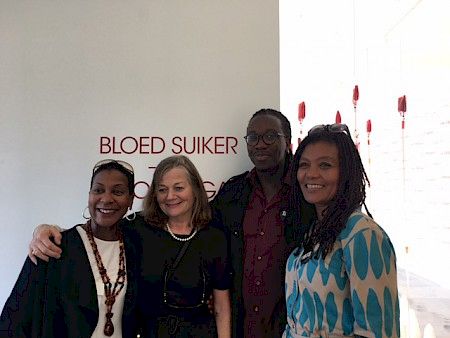
Jennifer Tosch, Lia Gieling, Giovanni Finisie, Patricia Kaersenhout
A concise history of the Amsterdam Lumber docks / artist
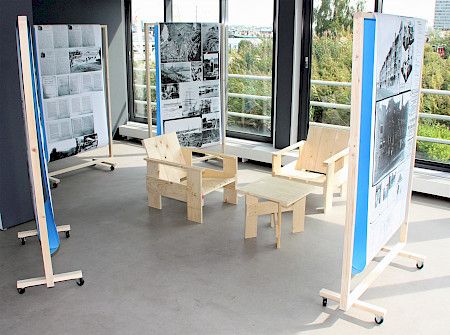
Installation Delphine Bedel ©Ab den Held
Participating artists of the exhibition A concise history of the Amsterdam Lumber docks
Inez de Brauw (The Hague 1989)
After finishing in 2014 a bachelor Painting at the HKU in Utrecht, Inez de Brauw continued her artistic practice at the Rijksakademie (2016-2017) in Amsterdam. On a regular basis her work is on view in solo and group exhibitions in and outside The Netherlands. In her paintings De Brauw investigates the friction between various times and cultures. She believes that every group, every culture and time has its own oddities and consequently its own values and taboos. Following her free associations she looks for images that belong to each other in terms of time and/or space, which she mixes in her paintings. After interfering with colour and plasticity, she is capable to show the contrasts again.
‘’Standing in front of an Inez de Brauw painting is like having the experience of standing between two mirrors. The interiors that make up the black and white paintings are composed by fragments taken from lifestyle magazines. De Brauw appropriates decorative patterns appearing on wallpaper, pillows and furniture, patterns which by the time they appear in a magazine have lost their historical significance. As such, these paintings become a framework that reflects the continued migration of forms and ideas, from magazines to real life (…)’’ (source: catalogue Rijksakademie 2016)
Iede Reckman (Leiden 1981)
Reckman finished his artistic education in 2003 at the Royal Academy for visual arts (KABK) in The Hague. Soon thereafter he co-founded the artist’s initiative Billytown in The Hague. Meanwhile Reckman did a master at the Glasgow School of Art (UK) (2013) and participated in different residency-programs in the US, Czechia, South Korea and at the European Ceramic Work Center (EKWC) in Oisterwijk (NL).
Reckman often works with wood and is interested in the so called science of dendrology. He uses this to compare the birth of a sculpture with a natural phenomenon. He looks at nature as the optimal balance between randomness and calculated influences. In his work Reckman tries to find a comparable balance. Through a repetition of form and action he focuses on processes that implicate the genesis of an artwork. That’s why he is decided that an artist when in the process of realizing a work, it makes sense to stick to the very concept of an idea. In this way mental and physical processes merge.
iedereckman.com
___________________________________________________________________________________________________________________________________________
Koos Buster (Amsterdam 1991)
Koos Buster finished his bachelor in ceramics at the Gerrit Rietveld Academie in Amsterdam in 2018. His final exam attracted a lot of attention. He got a solo show at Galerie Fons Welters in Amsterdam and immediately received an invitation for a residency at De Bijenkorf department.
On the one hand Buster’s ceramics are indebted to the typical Dutch tradition of small wall tiles with a one-liner text, like ‘East West Home is Best’, et cetera. But on the other hand Buster interferes in this tradition by designing his ceramics with a kind of irony by ‘posting’ contemporary texts on his objects. ''My work portrays the search for a certain “doltish perfection” or something trivial that could also be celebrated. When I have an idea, I start sketching. Those sketches are a first step into the process, but I also like to see them as potential finished works, fully established within the sketch phase. The innocence and messiness of a quick sketch has elements I like to see returned in a final piece of work (…)’’. (source Mr Motley 2018)
_____________________________________________________________________________________________________________________________________
Delphine Bedel
Delphine Bedel is an artist, editor, curator and lecturer. She is founder of Meta/Books, a publishing and research platform for emerging photographers and designers. Principal topics of interest are media, technology, feminism and the global circulation of images. Known for her cutting-edge publications and feminist education projects, Bedel works with leading cultural institutions, photography festivals and art and design academies. Her work is exhibited internationally. She is a frequent speaker in international conferences and seminars, including Centre Pompidou, Paris; Stedelijk Museum Amsterdam; Chelsea College of Art and Design London; etc. Bedel is currently Member of the Advisory Board of the Mondriaan Fonds and the German Photography Academy. In addition, she is a PhD researcher at the University for the Creative Arts (UK). Bedel contributes to books and magazines. Her work is featured in the British Journal of Photography, Aperture Photobook Review, Eikon Magazine, ID-Pure, Tagesspiegel, Filter magazine, Metropolis M, etc.
See for more information about Delphine Bedel and her work: delphinebedel.com.
An interview with Joyce Poot is to be published on this site later this month.
Gerelateerd:A Concise History of the Amsterdam Lumber Docks / project
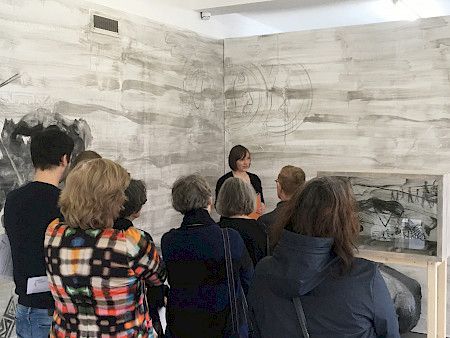
Cirkel by Basje Boer live column (2)
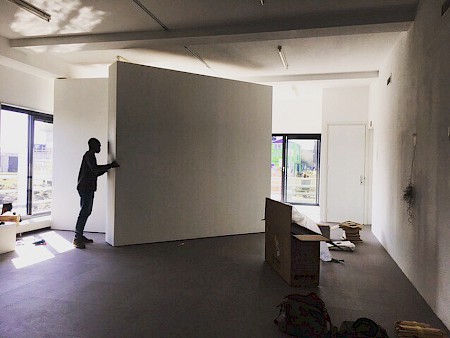
Thierry Oussou working on his installation "Une histoire: le miel aux lèvres" at Cargo.
Fotowerk / about

Fotowerk, editie van Gerco de Ruijter.
Gerco de Ruijter – Fotowerk (18.07.2002-01.09.2002)
Allang voordat Gerco de Ruijter (1961) voor een Cargo-project gevraagd werd, was ik gefascineerd hoe de kunstenaar de meest fantastische landschappen met zijn ‘’vliegercamera’’ vanuit de lucht wist vast te leggen. De Ruijter was dan ook een van de eerste kunstenaars die bij me opkwam toen ik met de programmering van Cargo begon. Al tijdens onze eerste ontmoeting in Almere was hij gefocust op de enorme hoeveelheid snelgroeiende populieren die er in de polder stonden. In Cargo experimenteerde hij voor het eerst met grote formaat werken …. van populieren natuurlijk.
Flos Wildschut nodigde ik uit een column over dit werk te schrijven, lees Zweven door een stille ruimte hier terug.
http://www.gercoderuijter.com/gerco2/
On-Trade-Off: LUNA-talk; moderation Marjolijn Dijkman and Maarten Vanden Eynde / program
Thursday, December 12, 2019 -

Participants of LUNA-talk
LUNÄ TALK, hosted by Cargo in Context in collaboration with Vlaams Cultuurhuis de Brakke Grond on Thursday
A public program within the frame of the exhibition ON-TRADE-OFF; THE WEIGHT OF WONDERS
Artists: Sammy Baloji, Marjolijn Dijkman, Jean Katambayi, Musasa, Georges Senga, Daddy Tshikaya and Maarten Vanden Eynde
About the project ON-Trade-Off
On-Trade-Off is a long-term artistic research project by an international group of artists, filmmakers and researchers, that want to bring attention to the ecological, social and economic implications of the extraction and processing of lithium, the most important natural resource for the worldwide production of green energy. In the West, lithium is presented as a major step in the production of ‘green’ energy, while the burdens for the local population, where lithium is extracted, are neglected. On-Trade-Off follows the trace of lithium from its origin, namely the mining town Manono in the Democratic Republic of Congo (DRC), where the largest lithium ore supply in the world has been discovered. Lithium has been named ‘the new black gold’. A diverse group of artists follows the international trade route via Australia and China to Europe (read more under: Projects).
About the LUNÄ Talk
The LUNÄ Talk refers to the legacy of the Lunar Society of Birmingham, UK. Marjolijn Dijkman developed the concept of the LUNÄ Talk in 2011 and since then a facsimile of the oriniginal table is used in different international settings. LUNÄ talks always take place around full moon consisting of critical discussions updating topics that occupied the Lunar Men as new scientific and industrial developments, but also art, education and social rights.
In this Amsterdam edition - also moonlit - experts with different scholarly backgrounds focussed on the ecological, social and economic consequences of the extraction and processing of lithium and cobalt. They will look both at the history of electricity and the current use of raw materials from the DRC for electronics and energy storage.
Participants:
- Patricia Fara, historian of science University of Cambridge, UK
- Esther de Haan, Programme Manager & Senior Researcher at The Centre for Research on Multinational Corporations (SOMO), Amsterdam, NL
- Dries Bols, Ceo Lifepwr, Antwerp, BE
- Raf Custers, historian, journalist and author of Grondstoffenjagers, Brussels, BE
- Moderation: Marjolijn Dijkman and Maarten Vanden Eynde
Sammy Baloji (DRC), Marjolijn Dijkman (NL), Maarten Vanden Eynde (B), Musasa (DRC), Georges Senga (DRC) en anderen / artist
On-Trade-Off; The Weight of Wonders / project
Cargo in Almere / about
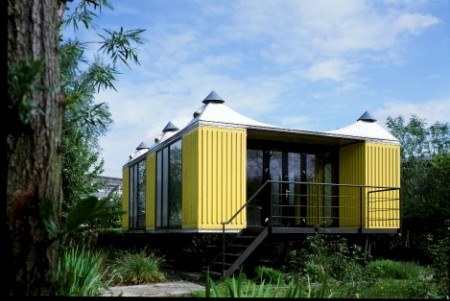
Cargo at de Realiteit. ©Jannes Linders
Where it all began
After 6.5 years of Museum De Paviljoens in Almere at the pace of 24/7, I greatly missed artists' reflections on the new land. Meanwhile, I was working as a consultant at Berenschot and as a consultant in Public Space - very relaxed compared to that at the Museum - but still, working 1:1 with artists began to beckon again. So I began to brood on a plan. I had been lucky enough to come into possession of an extraordinary house on De Realiteit in 1999, an experimental neighborhood that was the result of a pitch issued by the Department of Public Works: architects could design a house there according to their own views, averse to any regulations. The winners were allowed to implement their design indefinitely. Right across the street from my own house, the container house Cargo had been vacant for some time.
I agreed with the owner on a reasonable rent to use the property in the summer for projects and in the winter for events. Unhindered by imposed policy plans, ratings and the like, I programmed two to three projects in the summer that had to do with Flevoland's characteristics in one way or another.
Monday, September 25, 2017 -
Remco Torenbosch / artist
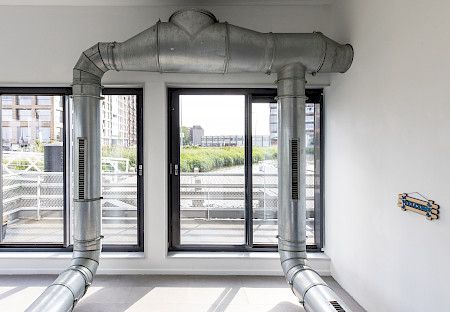
Part installation VIOLETS 2 Ghislaine Leung in Cargo; @Aatjan Renders (courtesy of the artist and ESSEX STREET, New York)
Remco Torenbosch (1982) studied at the Willem de Kooning Academie in Rotterdam, Universität der Künste in Berlin, and participated in the residency program at Rijksakademie in Amsterdam. In 2020 he will be part of the research residencies at ruangrupa Jakarta and ZK/U Berlin. His work has recently been exhibited at: Stedelijk Museum Amsterdam, Kunsthalle Wien, Victoria and Albert Museum London, De Appel Amsterdam, Kunsthaus Zürich, De Vleeshal Middelburg, and GAMeC Bergamo. He participated in collaboration projects with: Forum on European Culture, KNAW Akademie van Kunsten, Casco Utrecht (as part of the Grand Domestic Revolution) and Stroom The Hague. In 2013 he was nominated for the Prix de Rome.
Ghislaine Leung (Sweden, 1980) lives and works in London. Recent solo projects include: Power Relations at ESSEX STREET, New York City (2019); CONSTITUTION at Chisenhale Gallery, London (2019); VIOLETS at Netwerk, Aalst (2018); Local Studies at Reading International, Reading (2018); The Moves at Cell Project Space, London (2017); 078746844 at WIELS, Brussels (2016). Leung is a member of PUBLIKATIONEN + EDITIONEN. Her first collection of writings, Partners, was published by Cell Project Space in 2018 and her second publication with Divided is forthcoming.
The International Institute of Social History (IISH) is a unique institute, serving science and society on a global scale. At an international level, we generate and offer reliable information and insights about the (long-term) origins, effects and consequences of social inequality. Established in 1935, the IISH is one of the world's leading research institutes on social history. Since 1979 the IISH has been an institute of the Royal Netherlands Academy of Arts and Sciences (KNAW).
Gerelateerd:On Property / project
Naro Snackey / artist

Naro Snackey
Naro Snackey (Bonn, 1980) studied at St Joosdt Academy in Breda and continued studying with a residency at the Rijksacademie in Amsterdam. The thread in her work is her own history. She is Indian-Dutch, was born in Germany, but raised in the Netherlands. Her work is about memories and identity and usually comes about in an associative and intuitive way. Although her work is reflective, she does not want to judge. Read this article in Metropolis M.
Snackey lives and works in Amsterdam
Gerelateerd:
DEUCE / project
A new destination for the sugar cones / lesol

Maroccan woman with one of the remaining sugar cones.
While dismantling the exhibition Blood Sugar, two Moroccan women happened to pass by. They stopped and gazed at us as they saw us discussing what to do with the remaining sugar cones which were an essential part of Patricia Kaersenhout's installation. What a coincidence by making these women of all people happy with the cones as so we had come full circle. During her research into sugar production and trade Patricia found out that the sugar cones as she has used them in Blood Sugar, originally are from Marocco. Since the 17th century they produce and store sugar in such cones. Via Spain and Portugal this traditional way of storing sugar they found their way to the Carribean. The raw sugar brought back to Europe sugar bakeries for centuries sugar bakeries sold them in these cones. As the Maroccan community in Amsterdam still sticks to this tradition it is a very pleasant thought to feast the women with the remaining cones .
Undermined: a conversation between Natascha Libbert and Peter Delpeut / program
Sunday, July 14, 2019 -
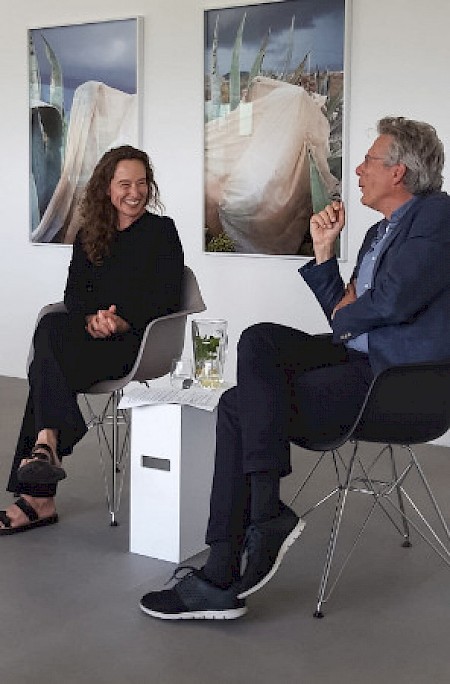

Natascha Libbert and Peter Delpeut | audience at the conversation
July 14 juli writer and filmmaker Peter Delpeut had a public conversation with Natascha Libbert about her work, her world view and choice of issues.
Gerelateerd:Natascha Libbert / artist
UNDERMINED / project
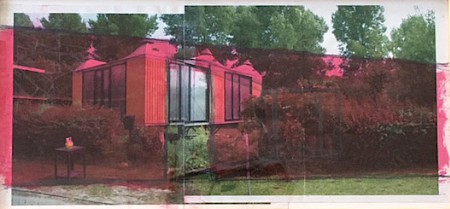
Pjotr Muller: Una giornata particulare, installation in and outside Cargo (1), de Realiteit in Almere 2004
Bombital concert registrated by Laura Bokhoven
Cargo and her Public Program

Audience during a conversation between Peter Delpeut en Natascha Libbert within the frame of her Project Undermined July 14 2019
A public program always is an integrated part of Cargo's projects, in order to seeing even better throughthe intentions of the artist and her/his work on display. Mostly there is no entrance fee, but reservations are highly recommended.
Public Programme
current:
upcomming:
past:
ON PROPERTY: Panel discussion and The Real Estate State July 16 2020
ON PROPERTY: screening PUSH (2019) with an introduction by Indira van 't Klooster
On-Trade-Off: LUNA-talk; moderatio Marjolijn Dijkman and Maarten Vanden Eynde
On-Trade-Off: Film program, curated by Rosa Spaliviero
On-Trade-Off: screening The Congo Tribunal, continued by an Artist talk
Van Hout en die dingen die voorbijgaan: boat tour along the shores of the Houthavens, lead by utbanist Ton Schaap
Van Hout en de dingen die voorbijgaan: encounter between old and new citizens and workers in de Houthaven
Undermined: a conversation between Natascha Libbert and Peter Delpeut
Je Verdient Het - Lecture by Floor Milikowski - Wie Verdient de Stad ? (Who Owns the City?)
Deuce: gamelan concert by Sinta Wullur & Inez Liem
Deuce: Artist talk moderated by Bert Steevensz
Je Verdient Het - workshop by Khalid Amakran in collaboration with ONS Bank/Het Instituut
Smoke and Mirrors - Sound walk through de Houthaven concept and guidanc Soundtrack City
Smoke and Mirrors - artist talk Maurice Bogaert and Edwin Zwakman
Patricia Kaersenhout - Blood Sugar/Bloed Suiker - screening Sporen van Suiker van Ida Does
Une Histoire, le miel aux lèvres - Mi a no mi Ik ben niet i Trefossa (2015) - Ida Does film screening
Une Histoire, le miel aux lèvres - rond]]e tafel gesprek
Une histoire, le miel aux lèvres - Bart Luirink (ZAM) in conversation with Thierry Oussou
DUSK - architectuurwandeling door de Houthaven olv De Gebouwengids
DUSK - Zef Hemel - Lecture - The future of the city (A plea for the metropole)
DUSK - lecture by Merel Bem 'Doorkijken'
Monday, November 16, 2020
Thursday, July 9, 2020
Thursday, December 12, 2019
Sunday, December 8, 2019
Sunday, November 24, 2019
Sunday, October 6, 2019
Sunday, September 15, 2019
Sunday, July 14, 2019
Thursday, June 28, 2018
Sunday, May 27, 2018
Sunday, April 22, 2018
Thursday, February 15, 2018
Sunday, November 26, 2017
Saturday, November 25, 2017
Monday, September 25, 2017
Sunday, May 21, 2017
Friday, April 21, 2017
Sunday, April 9, 2017
Sunday, March 12, 2017
Sunday, February 26, 2017
Sunday, February 12, 2017
